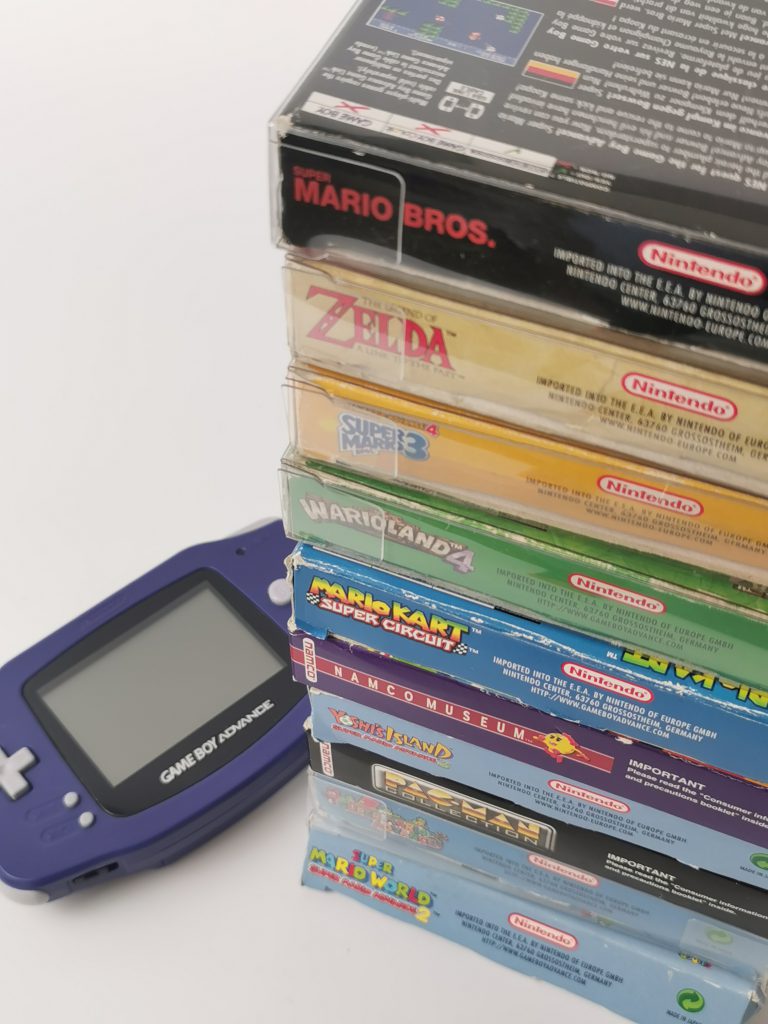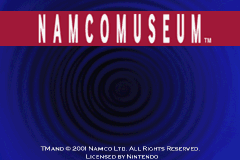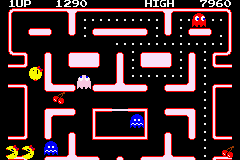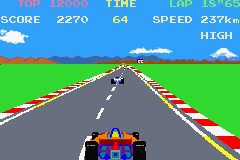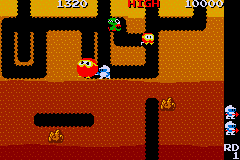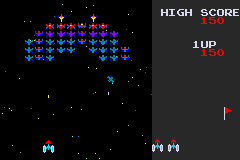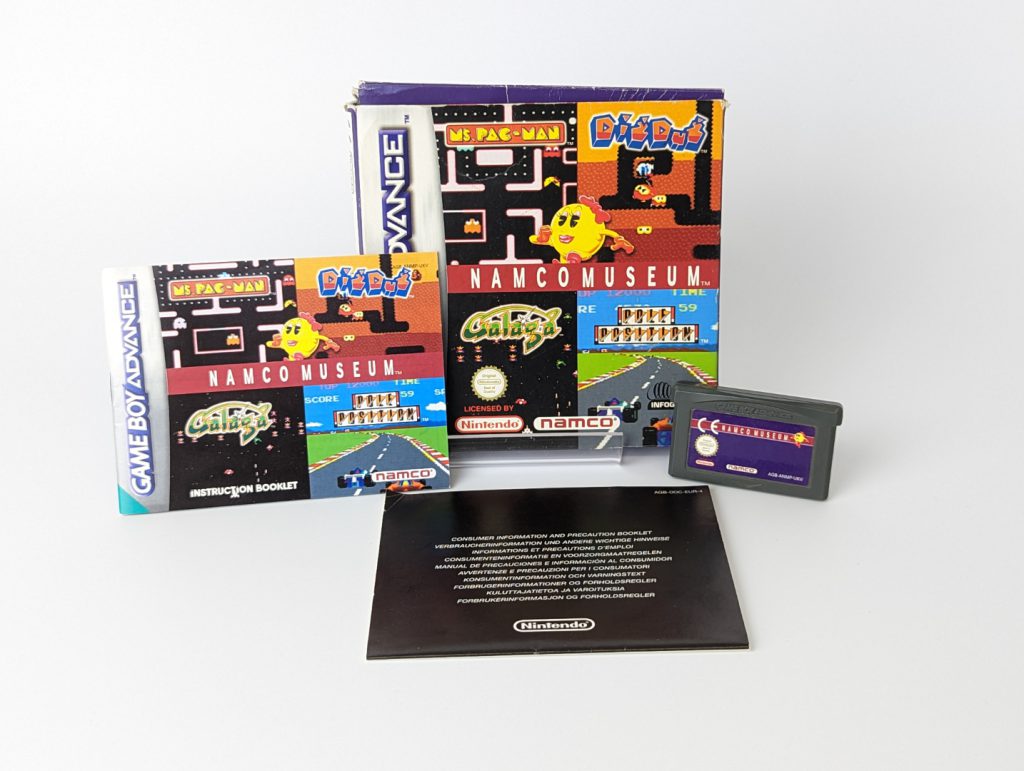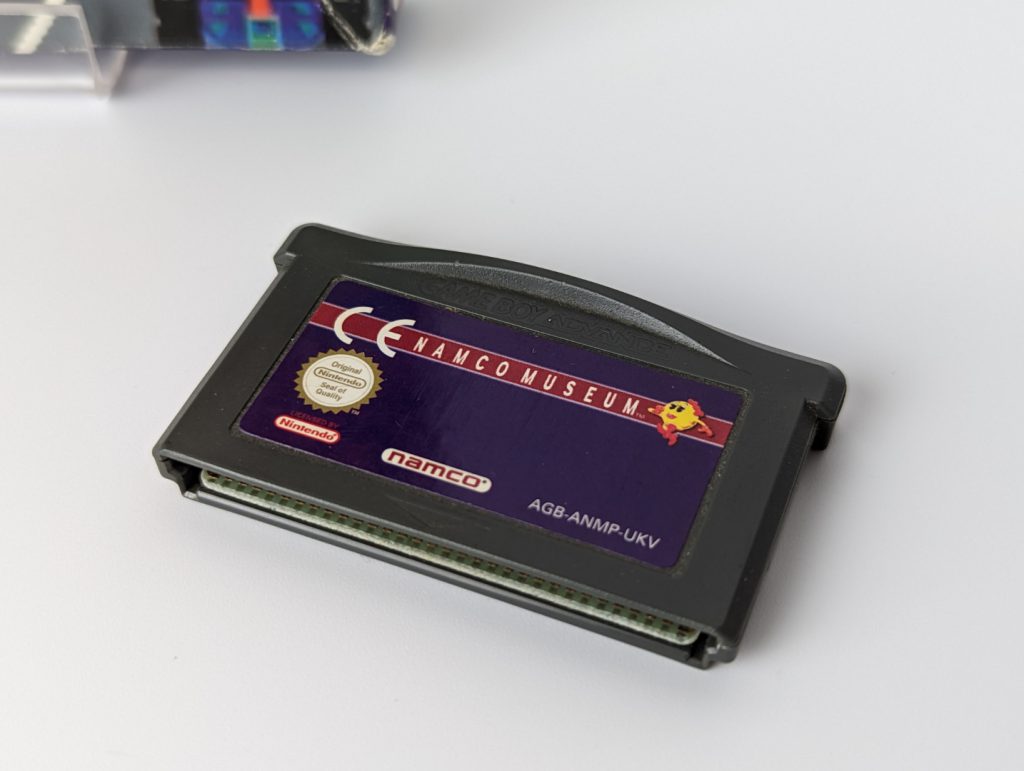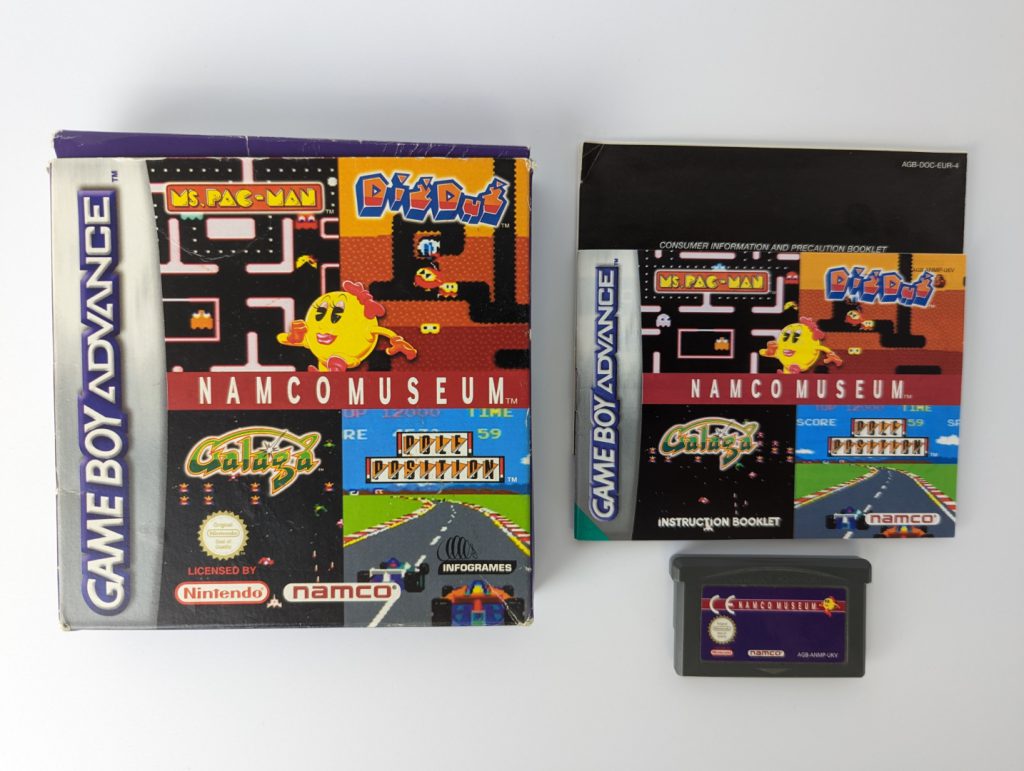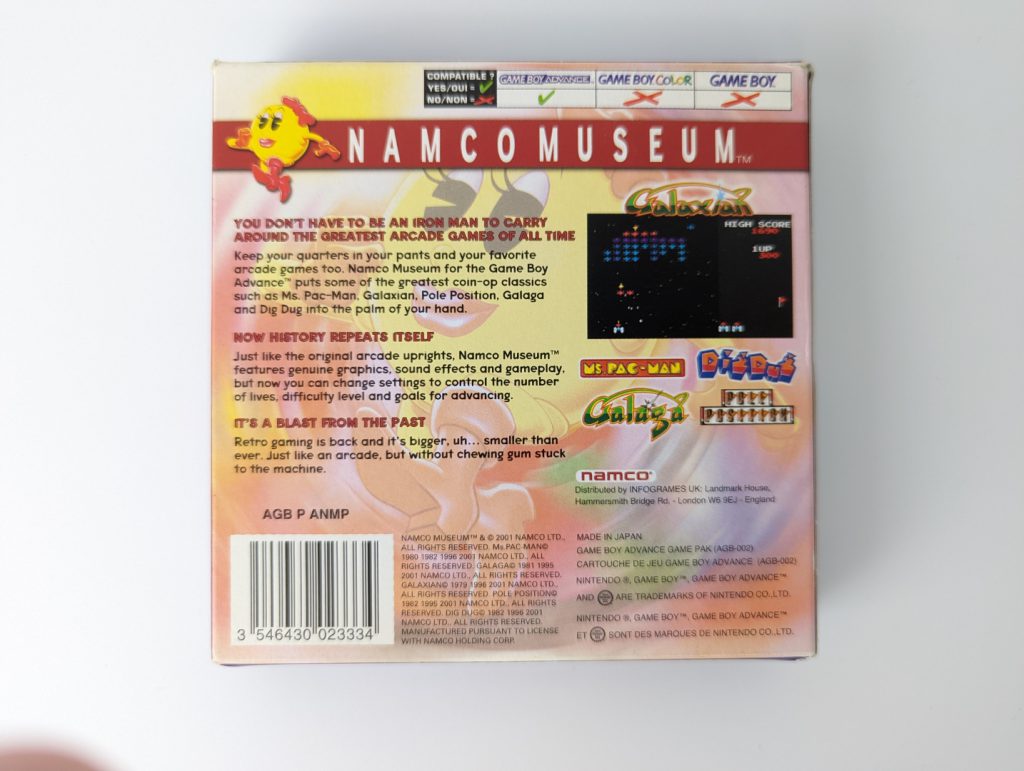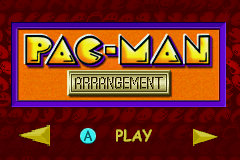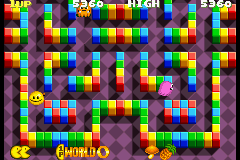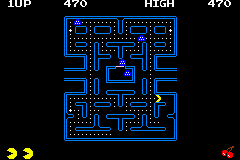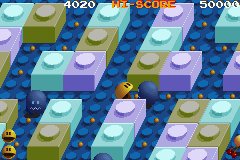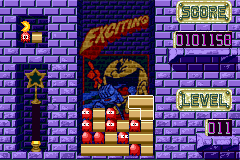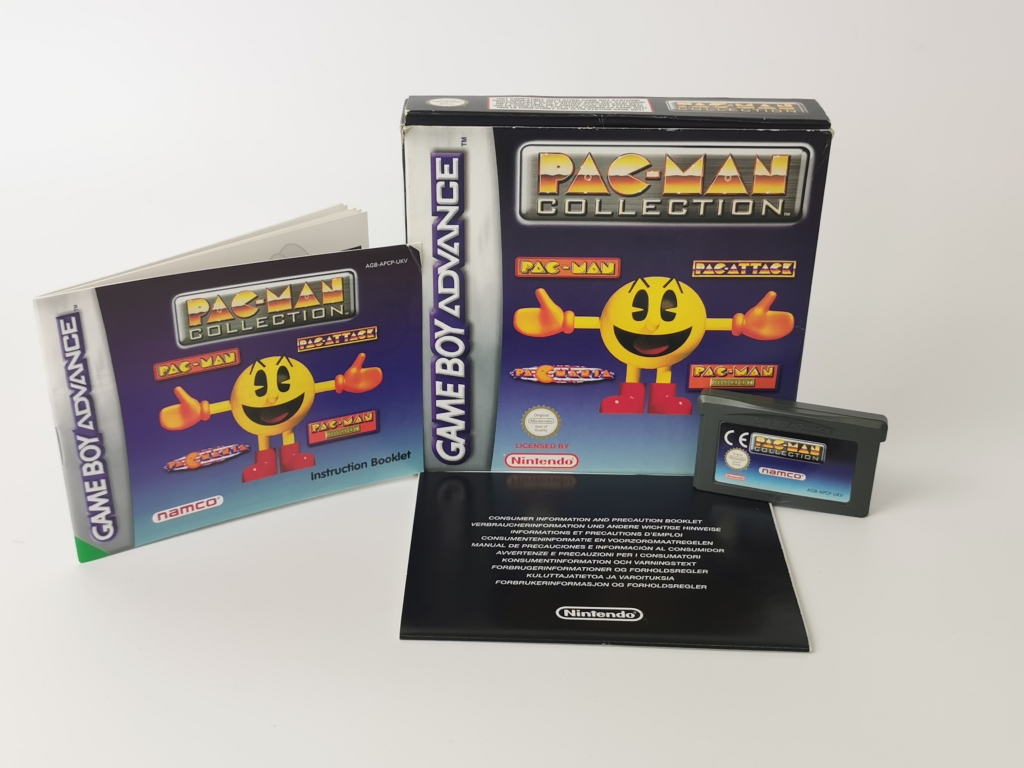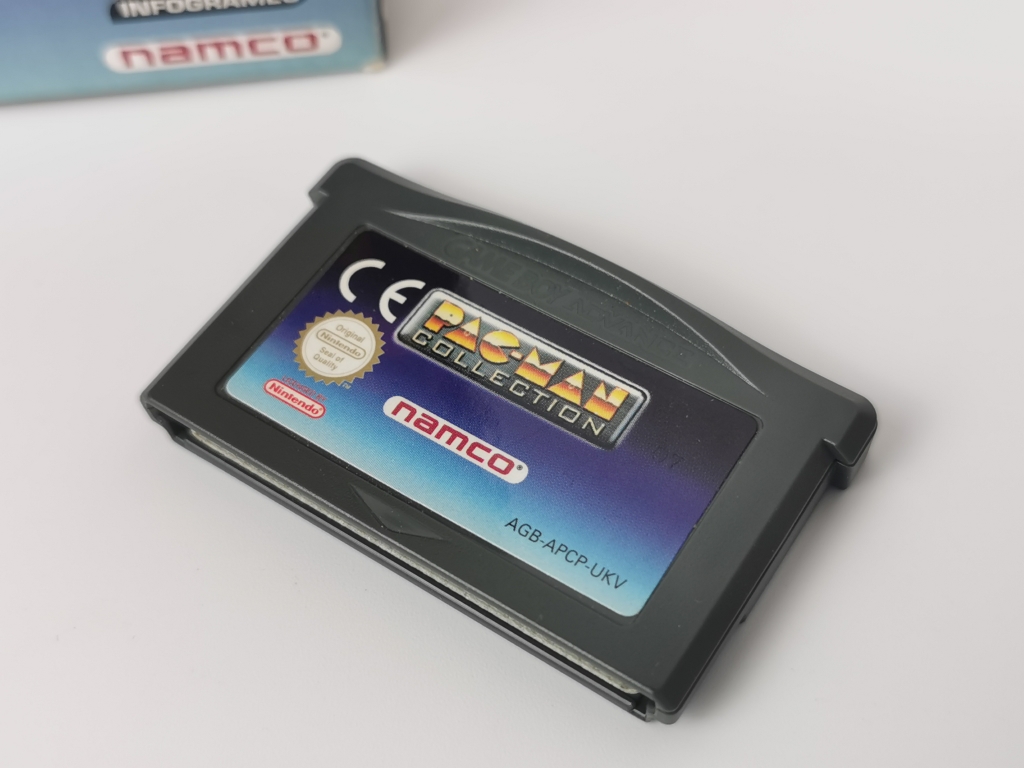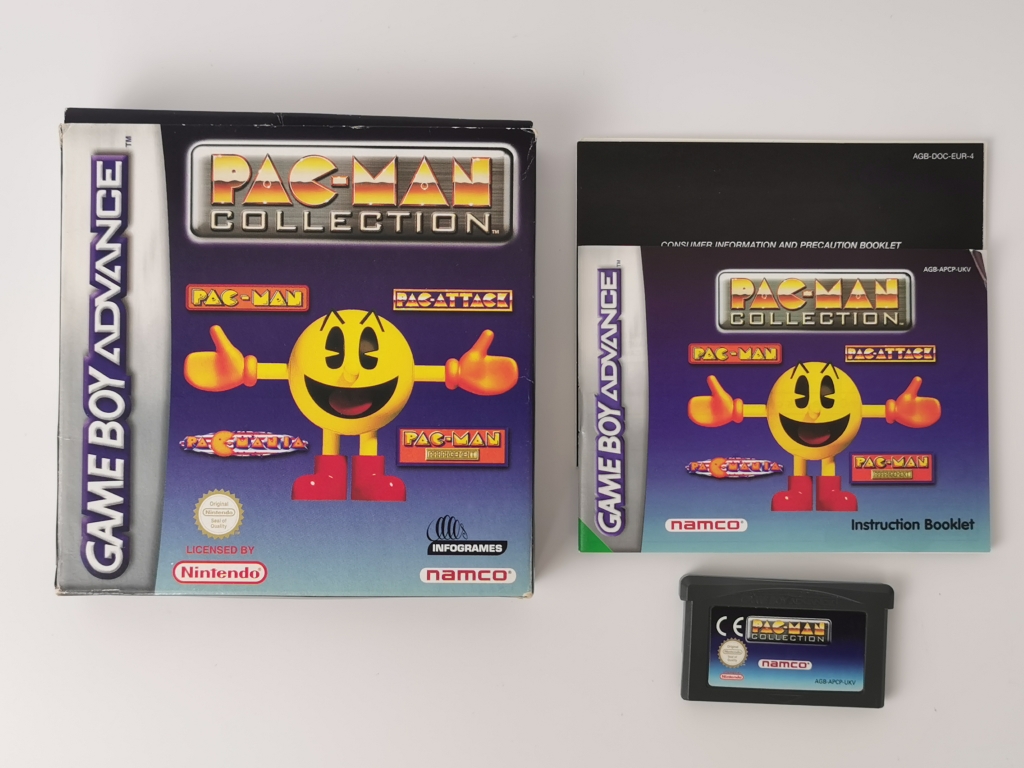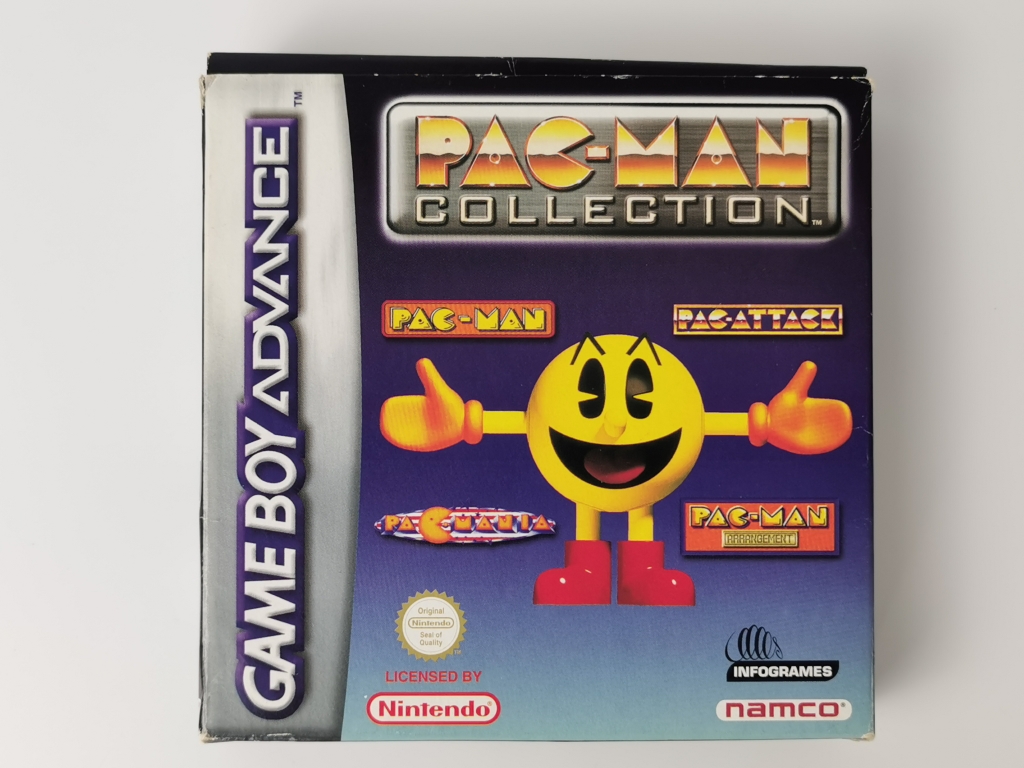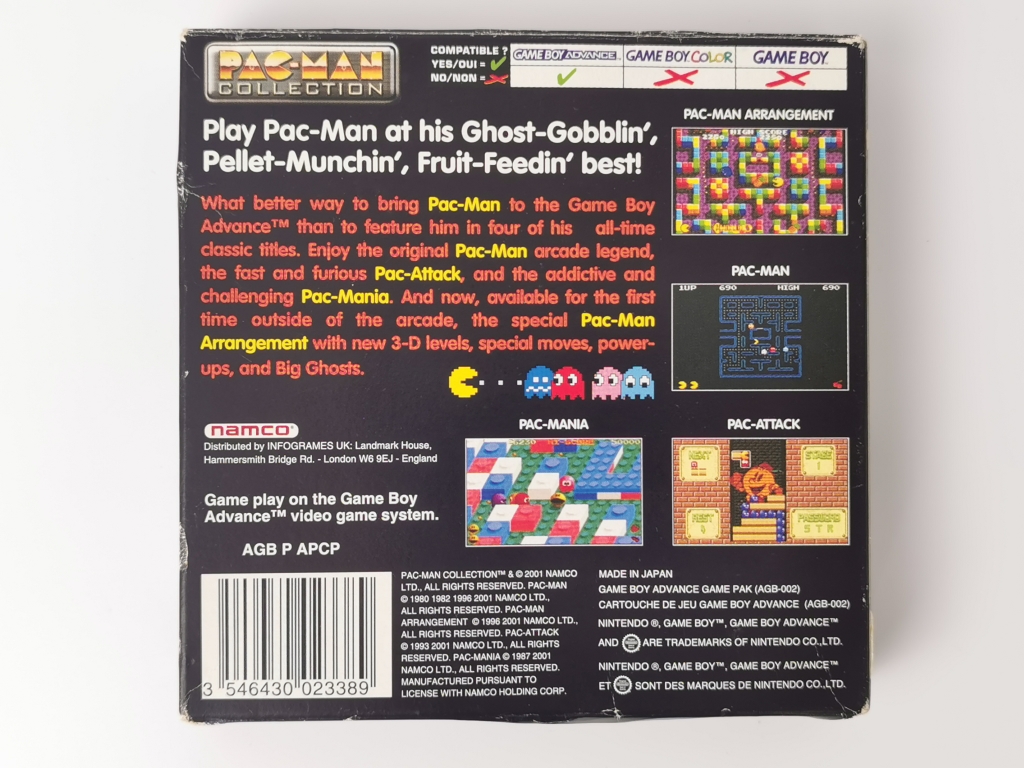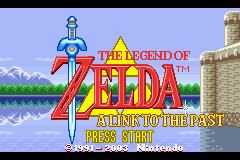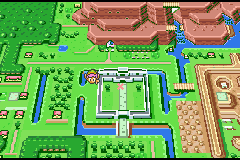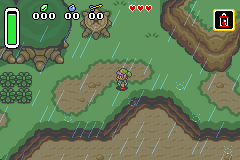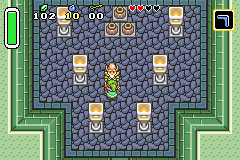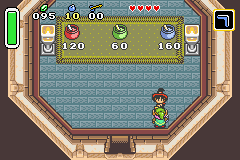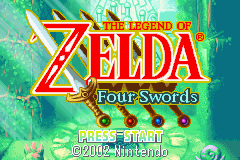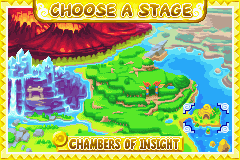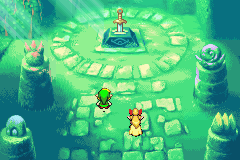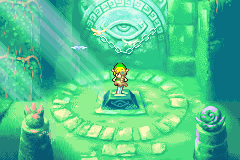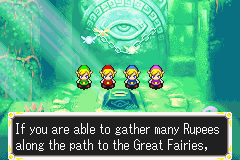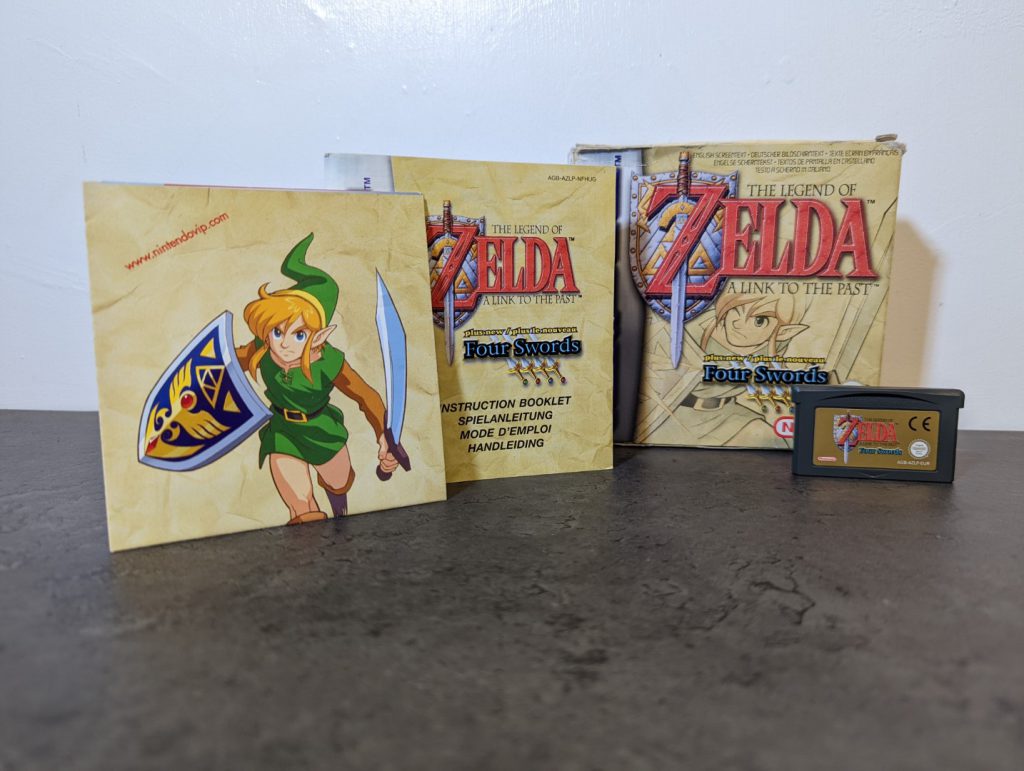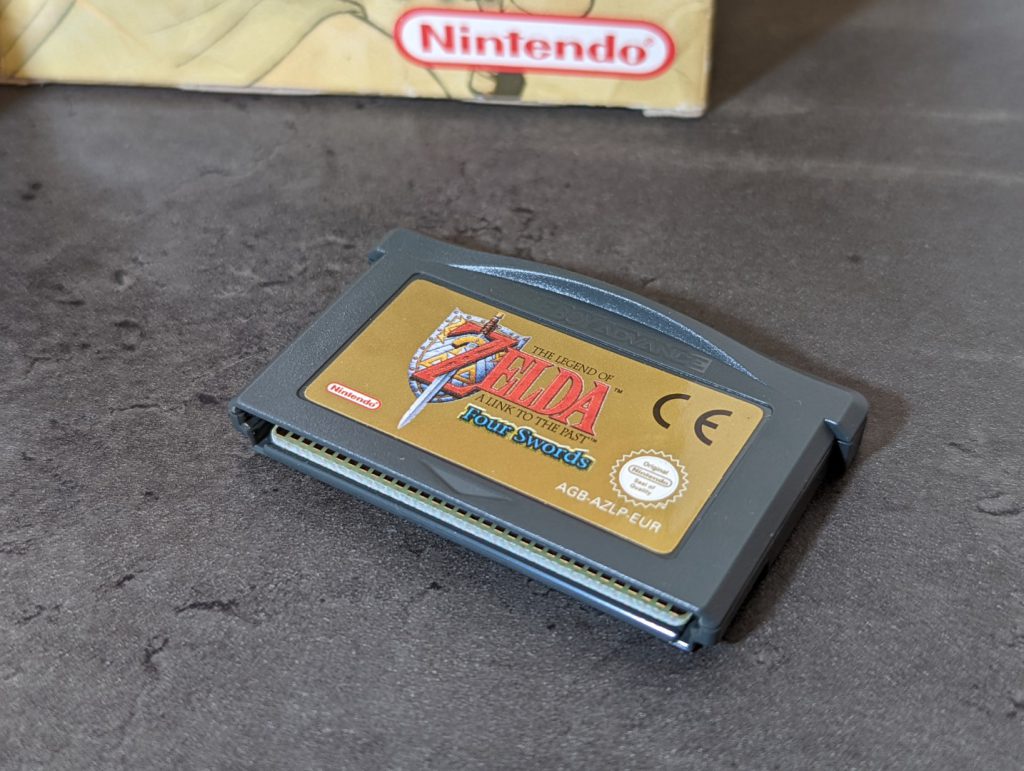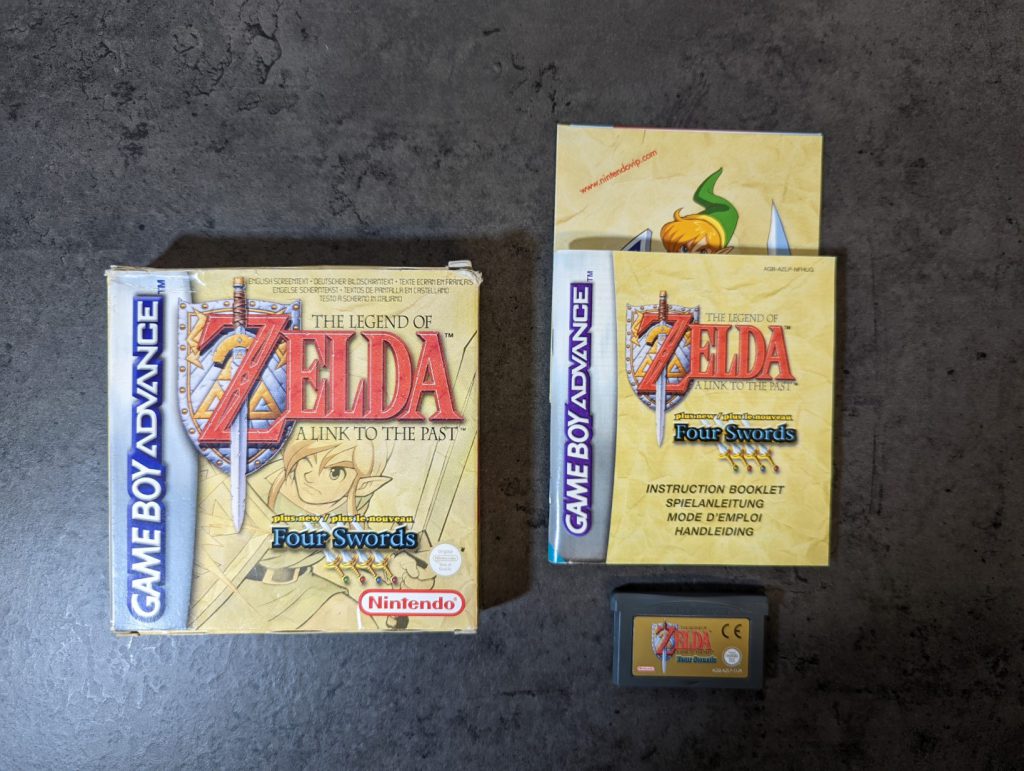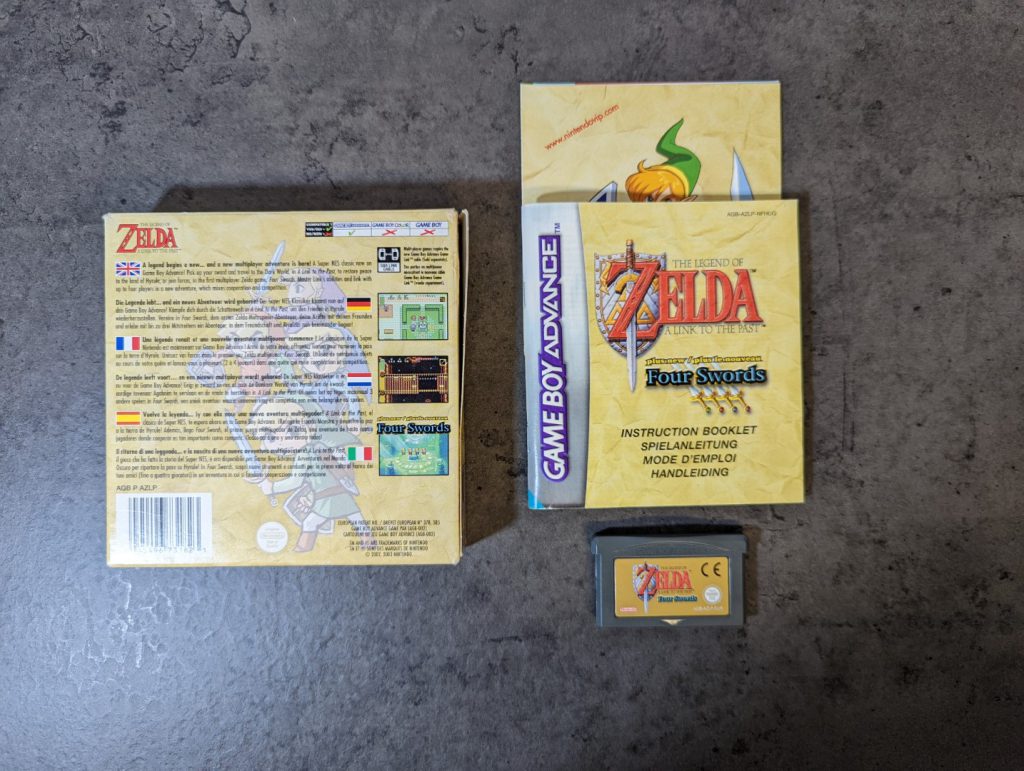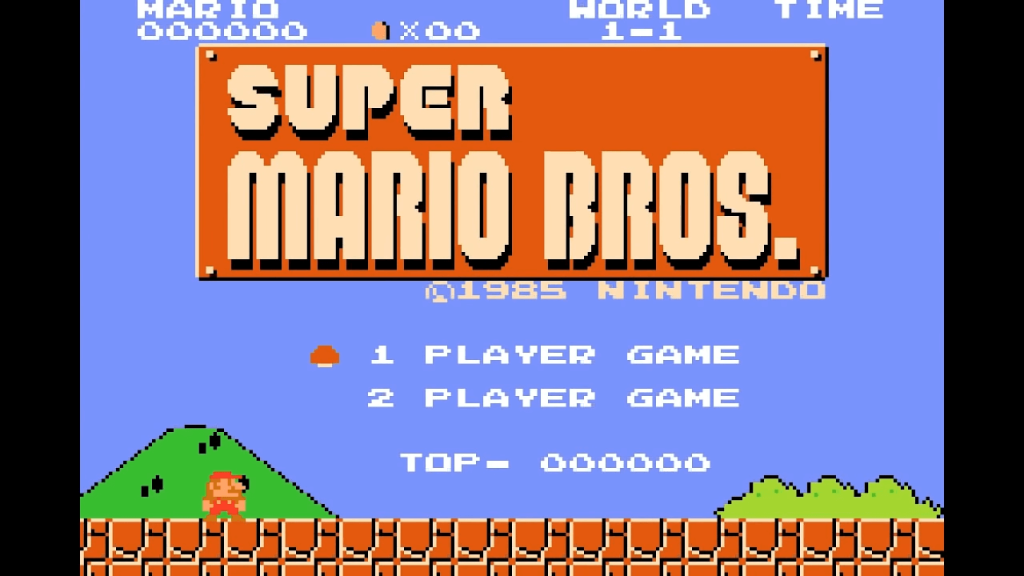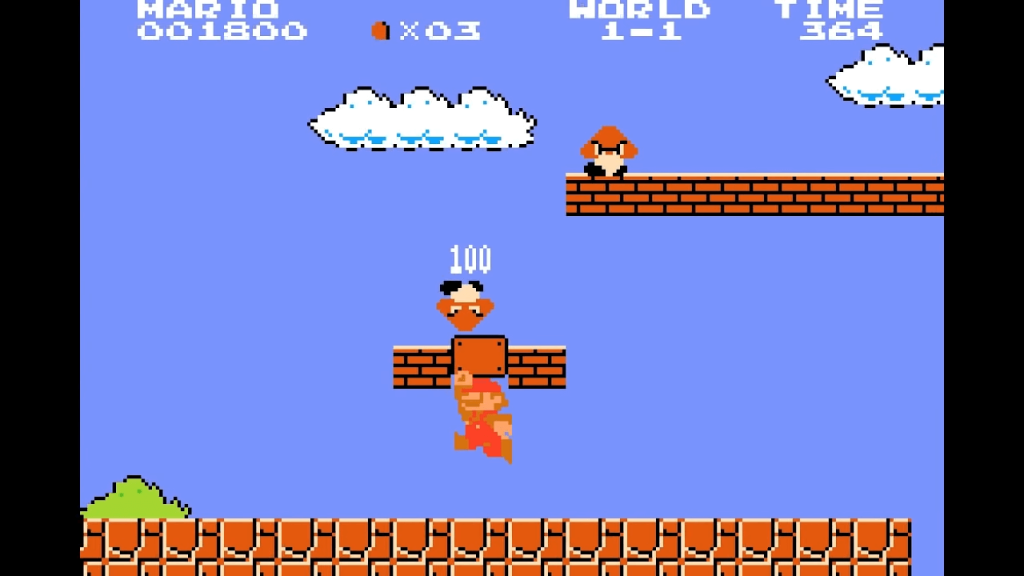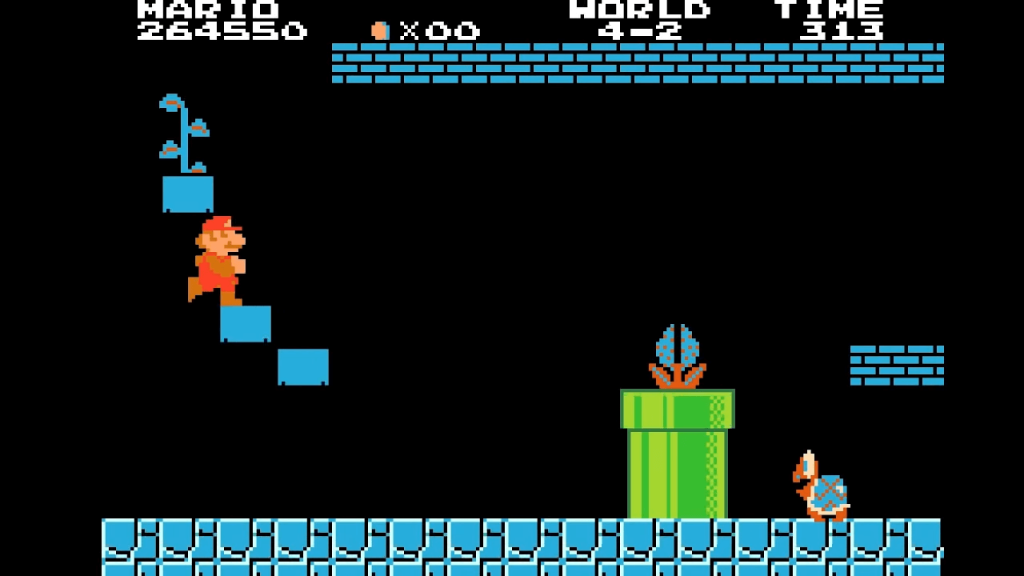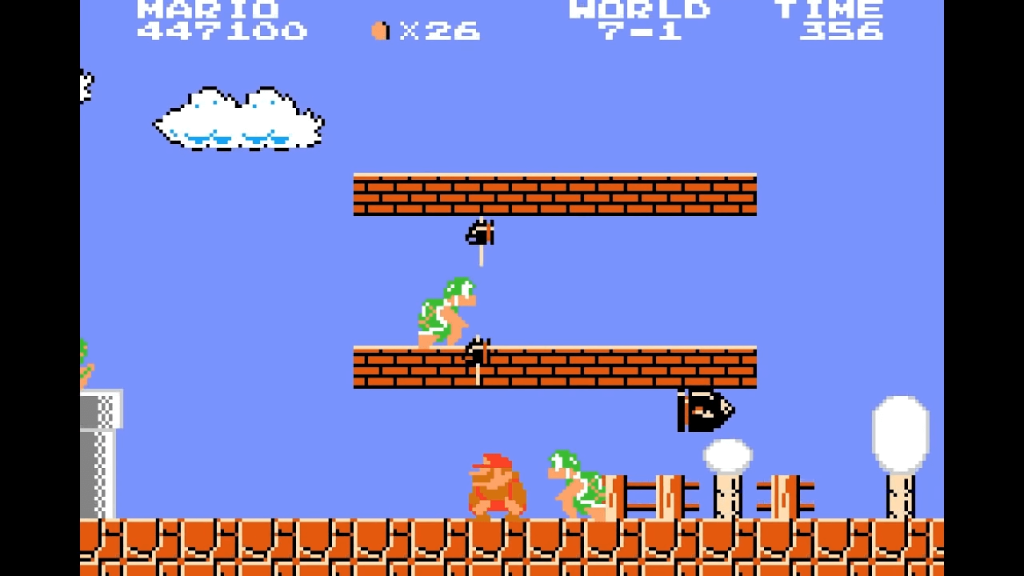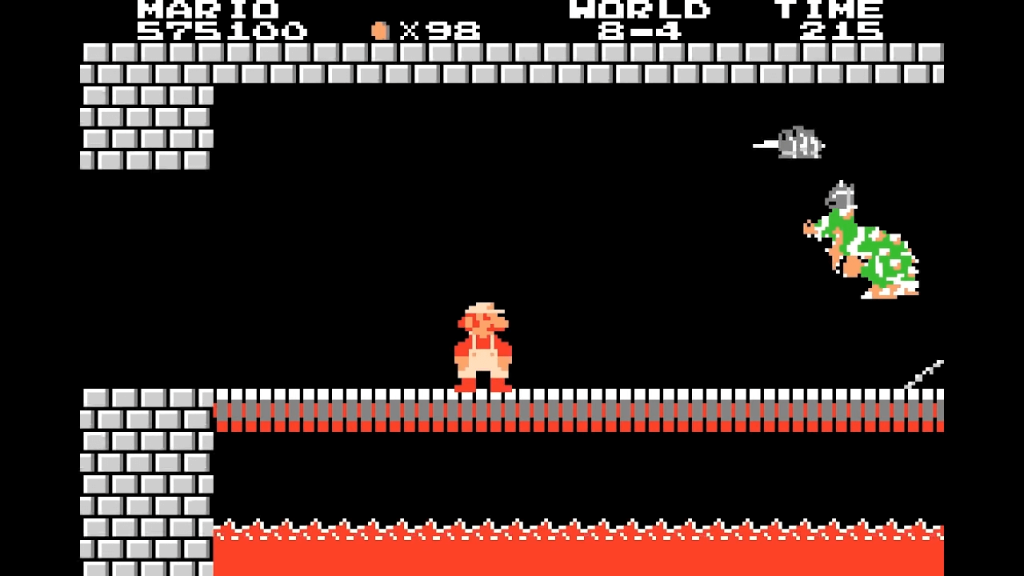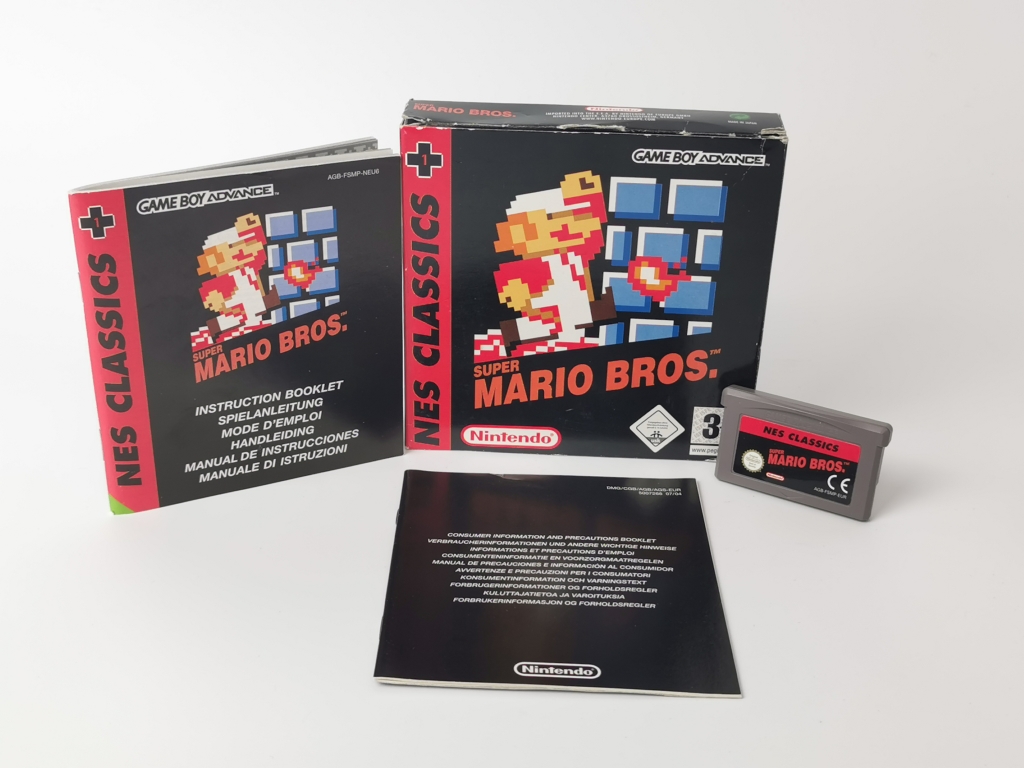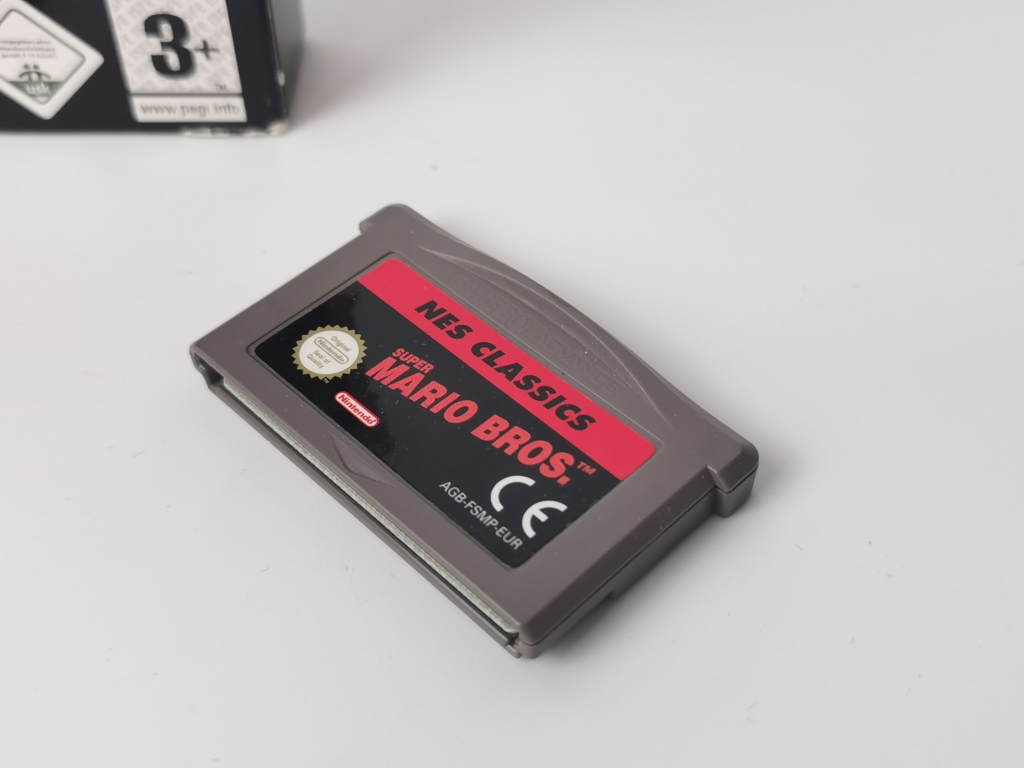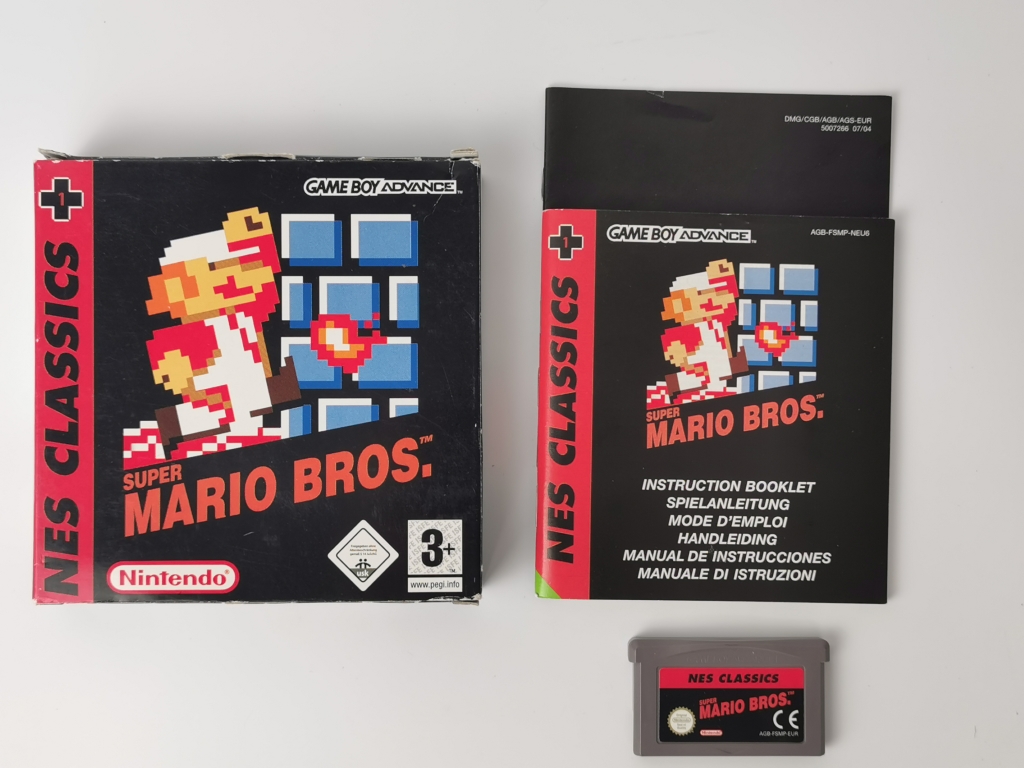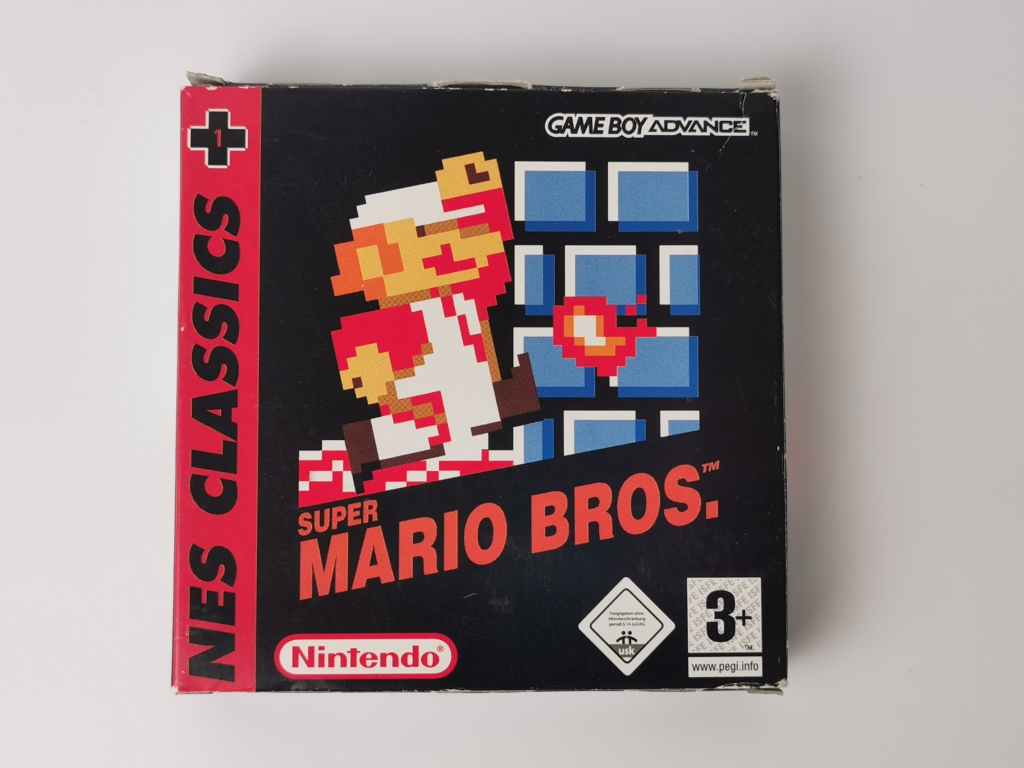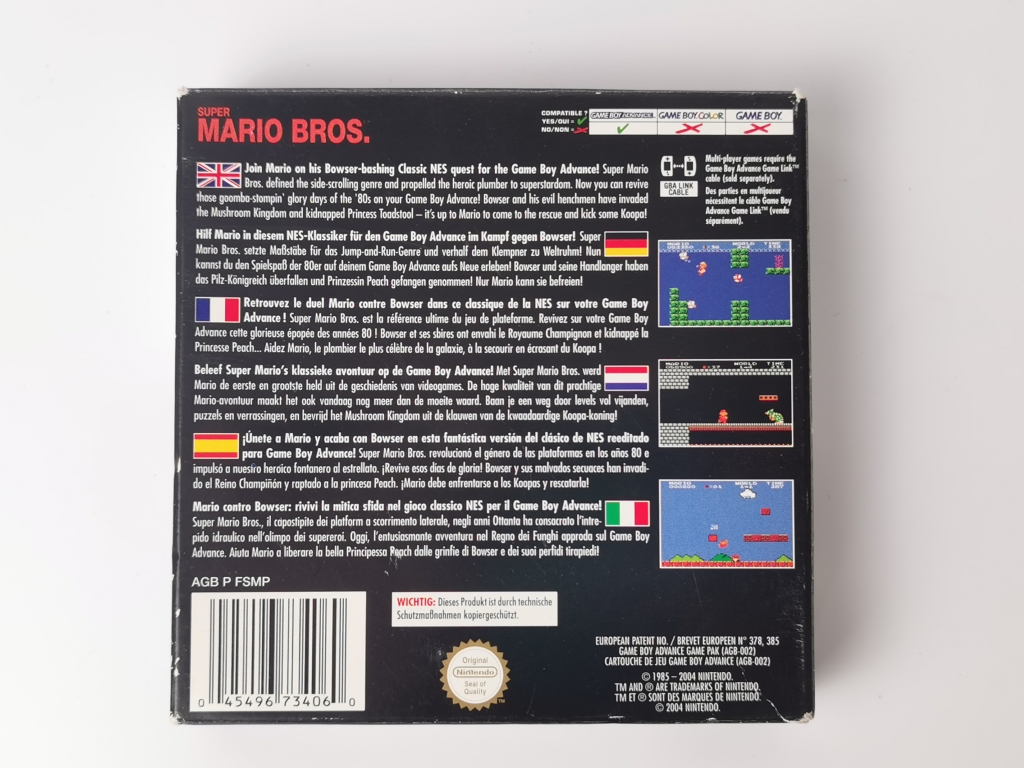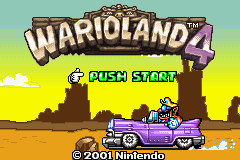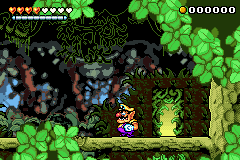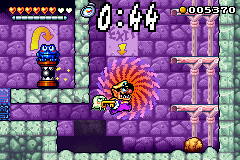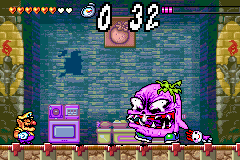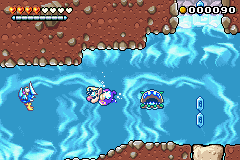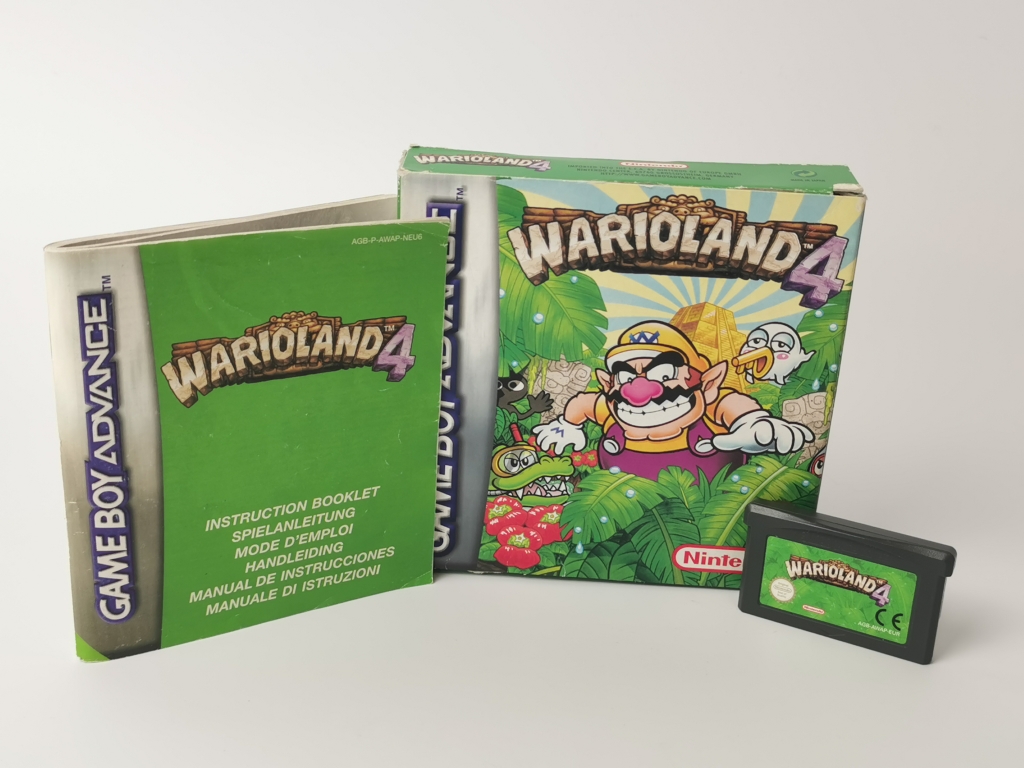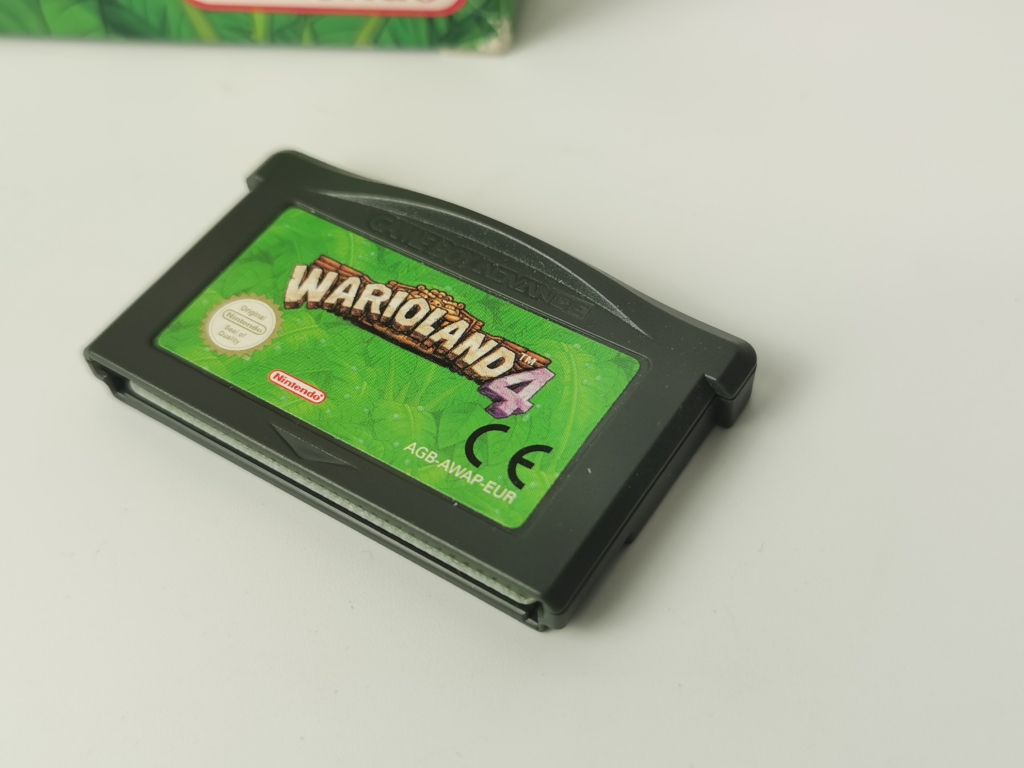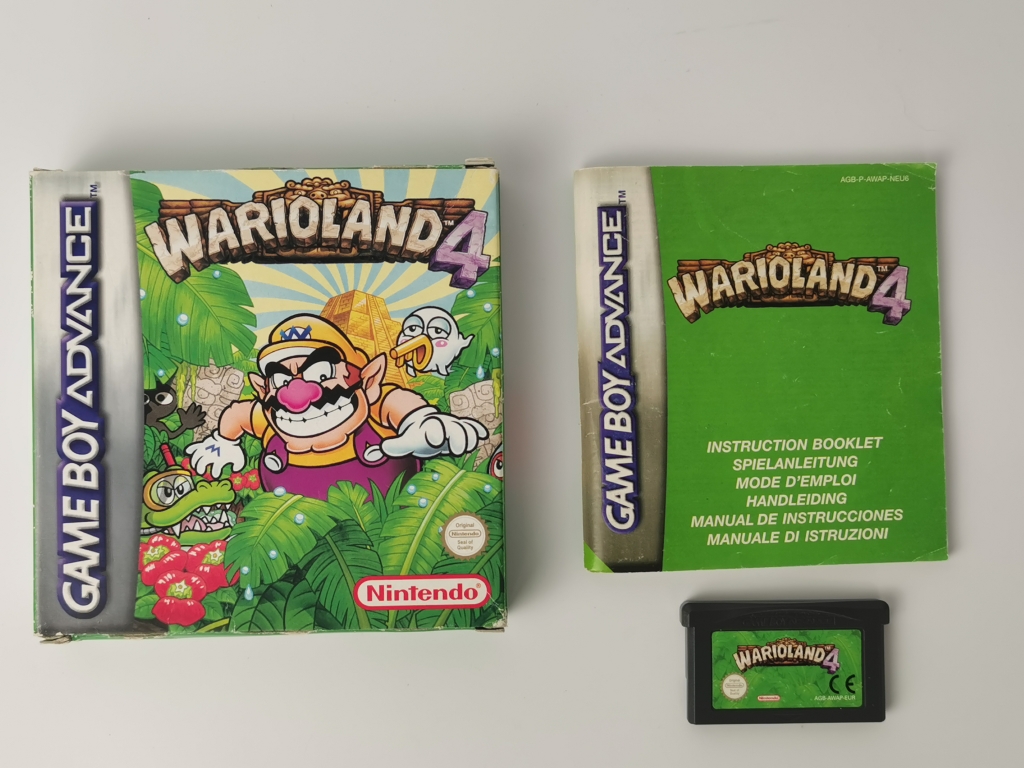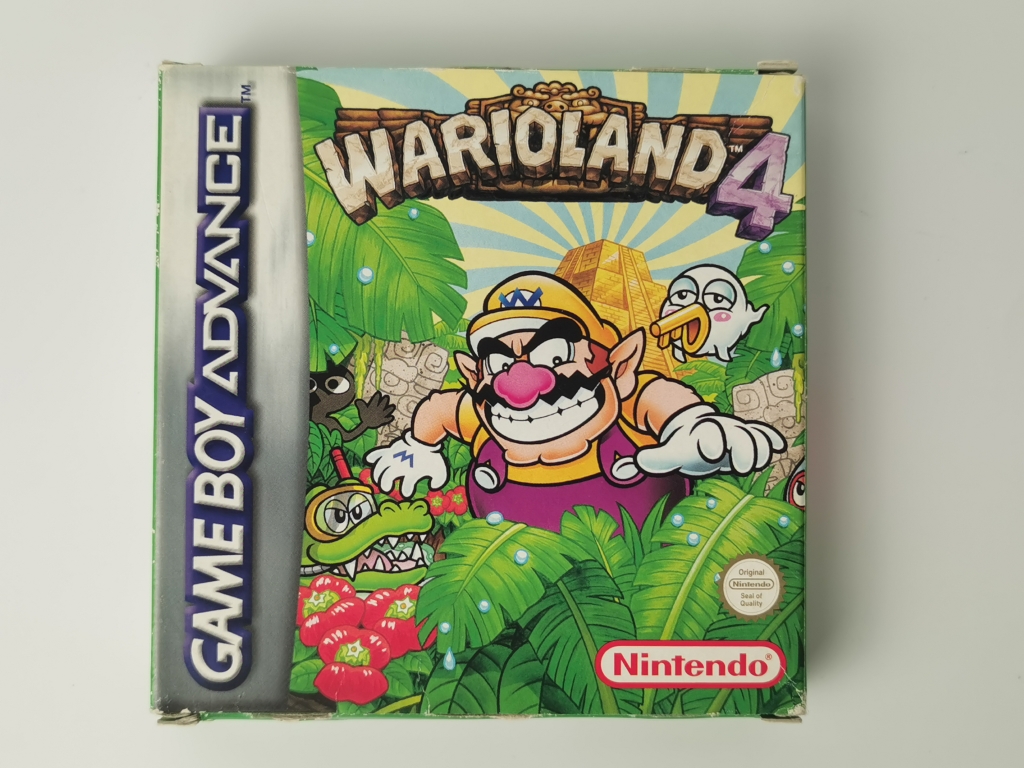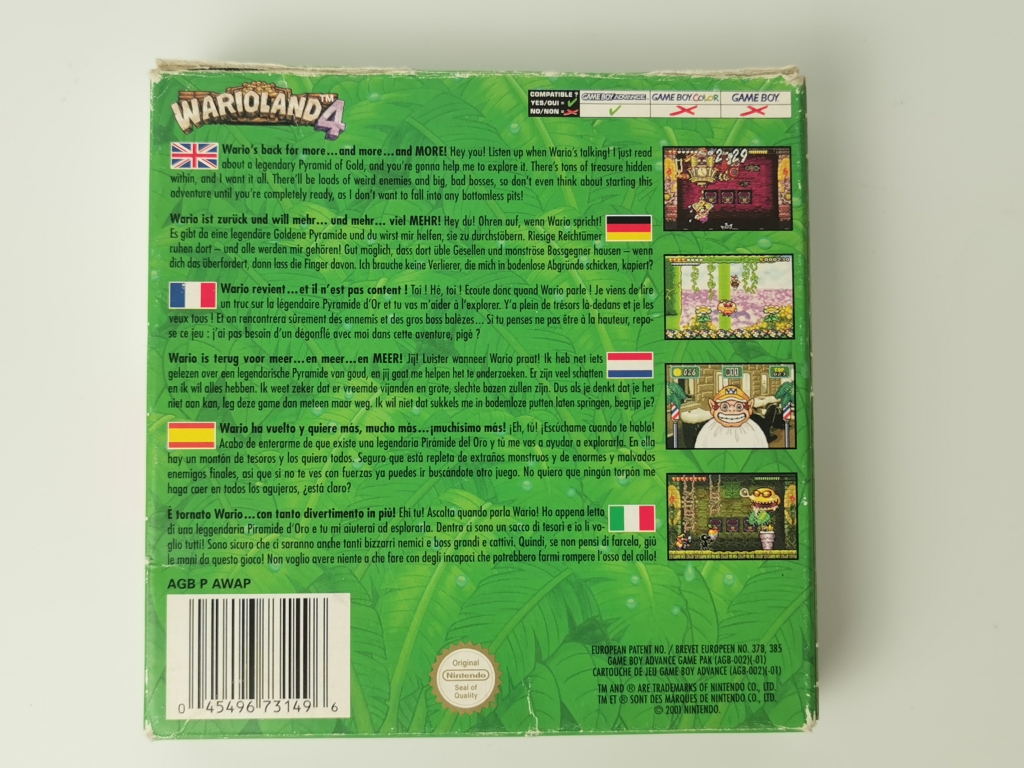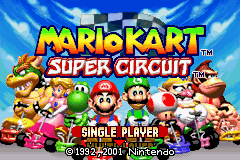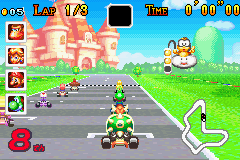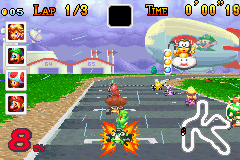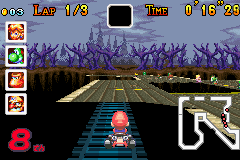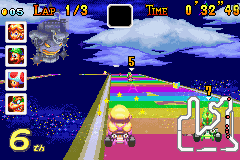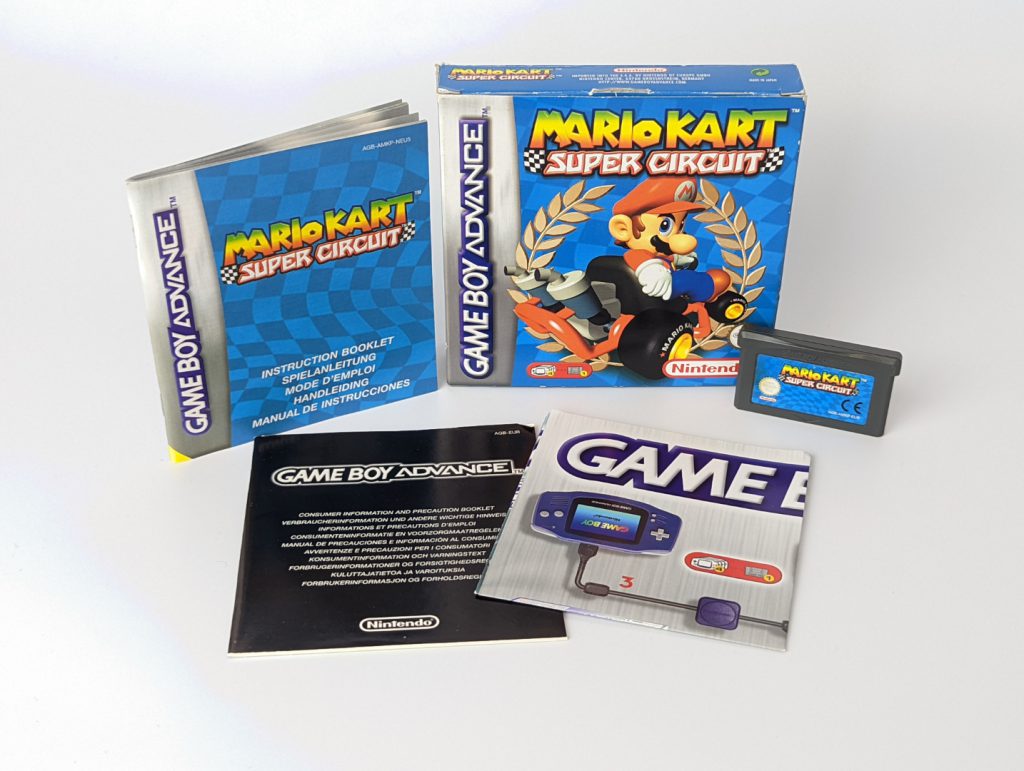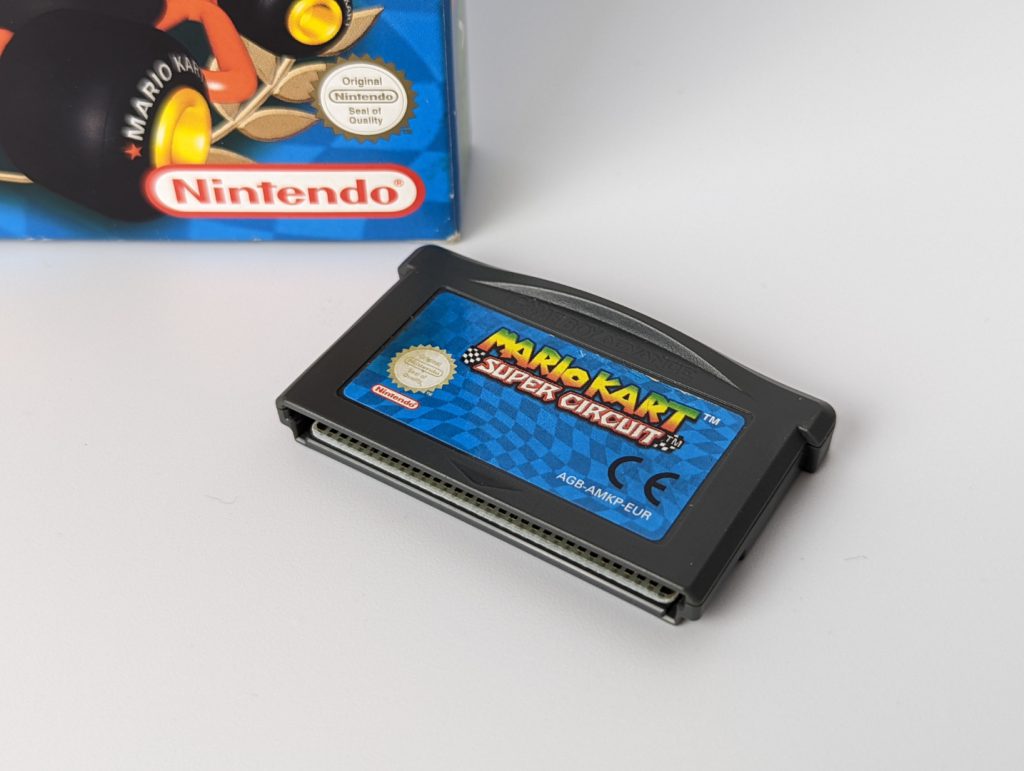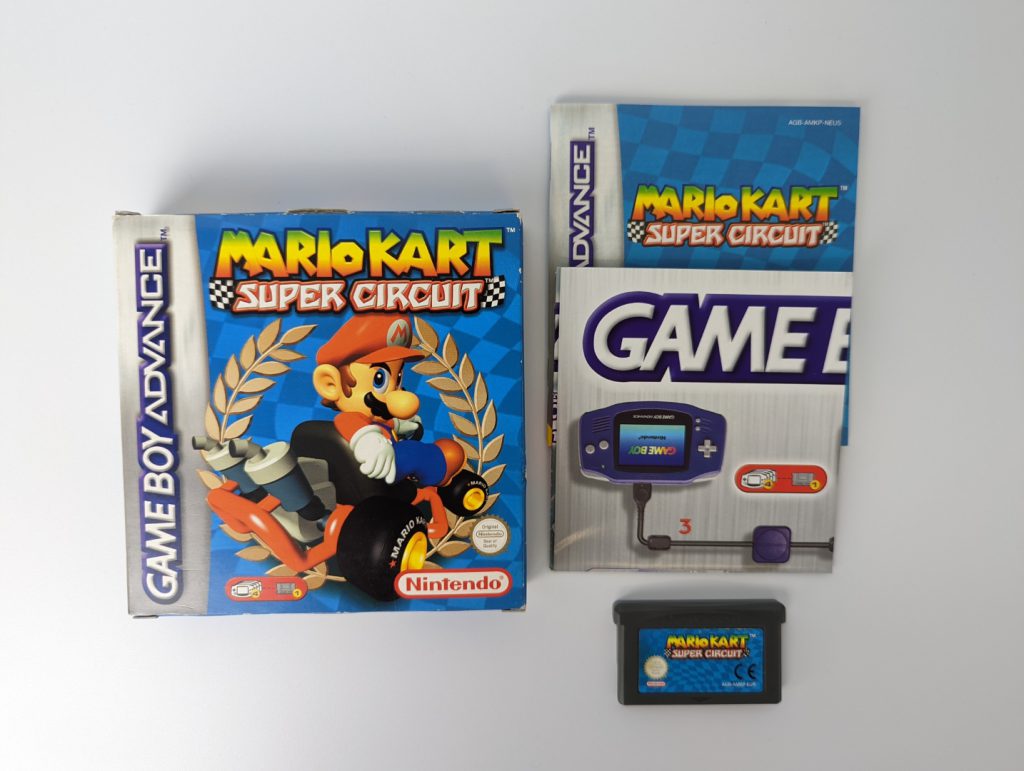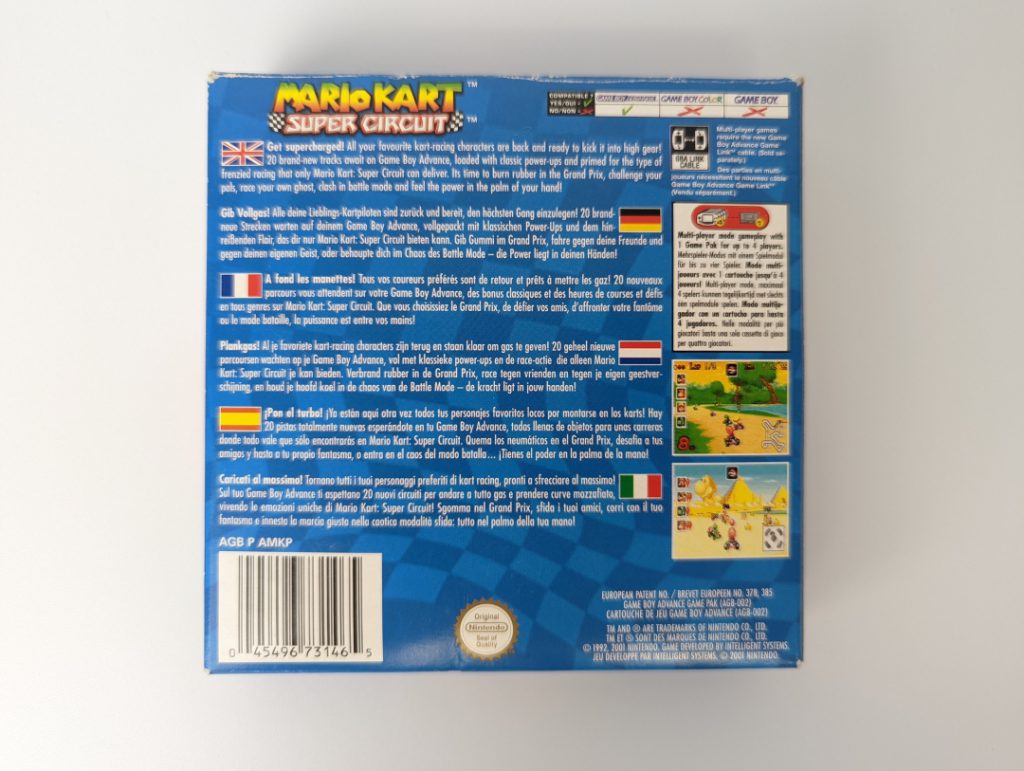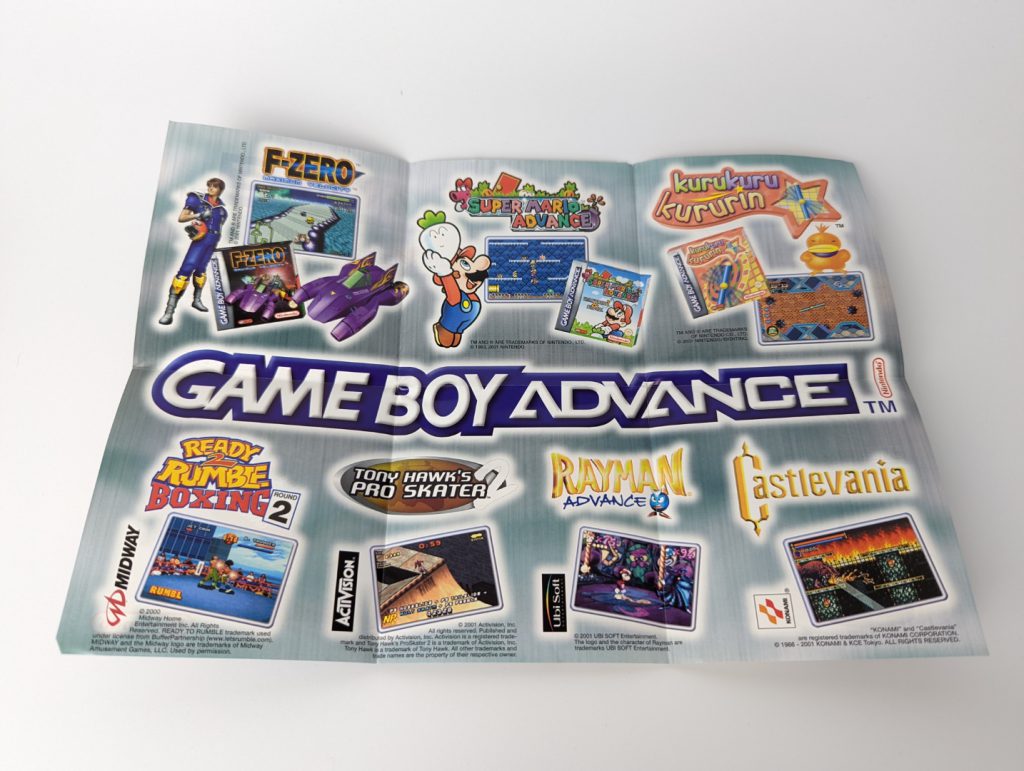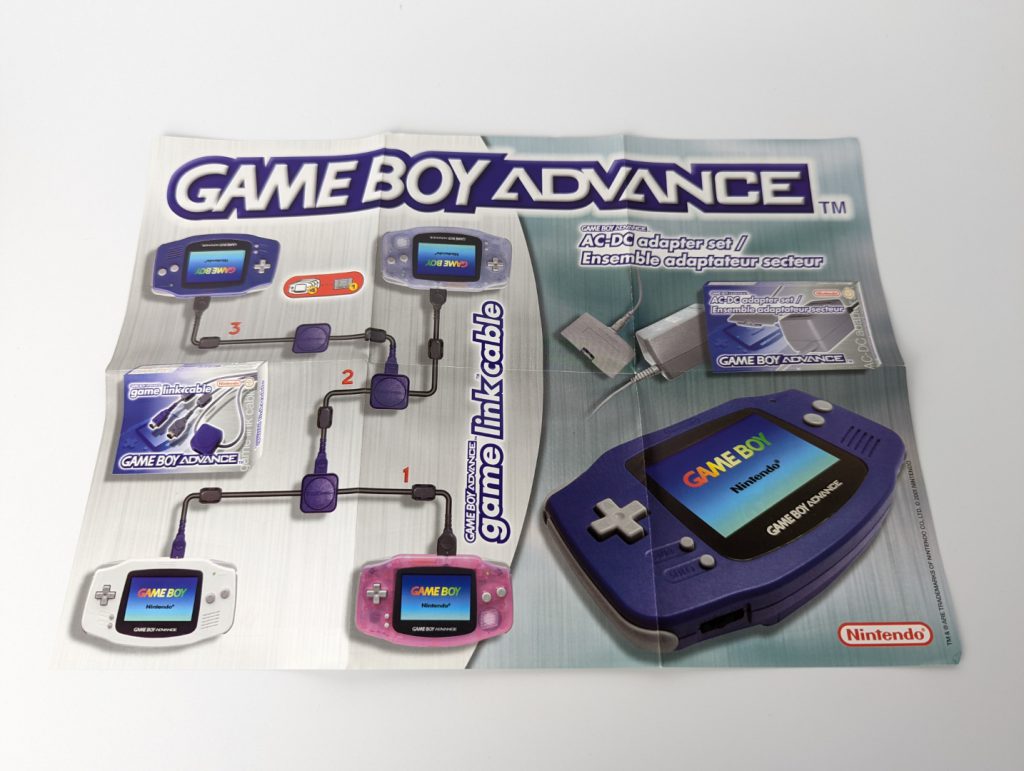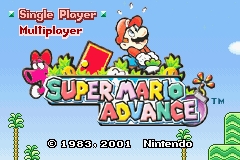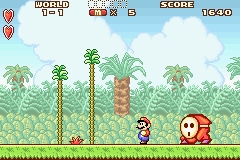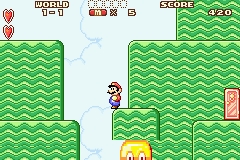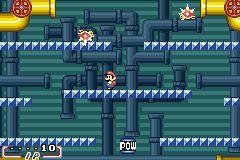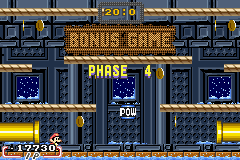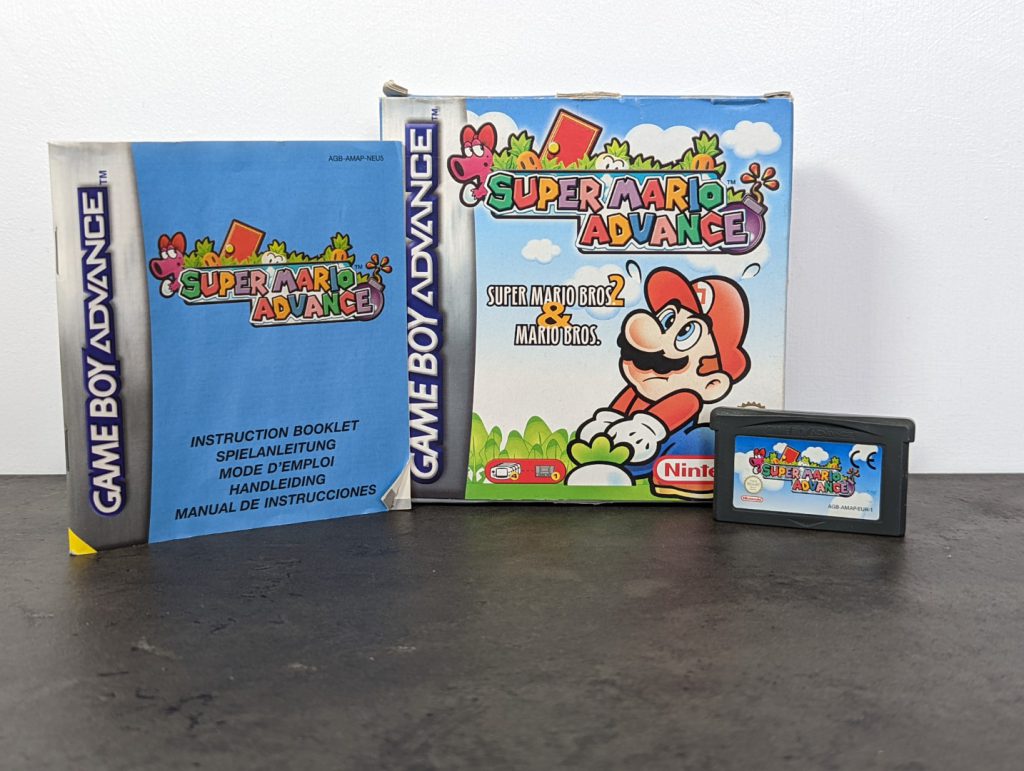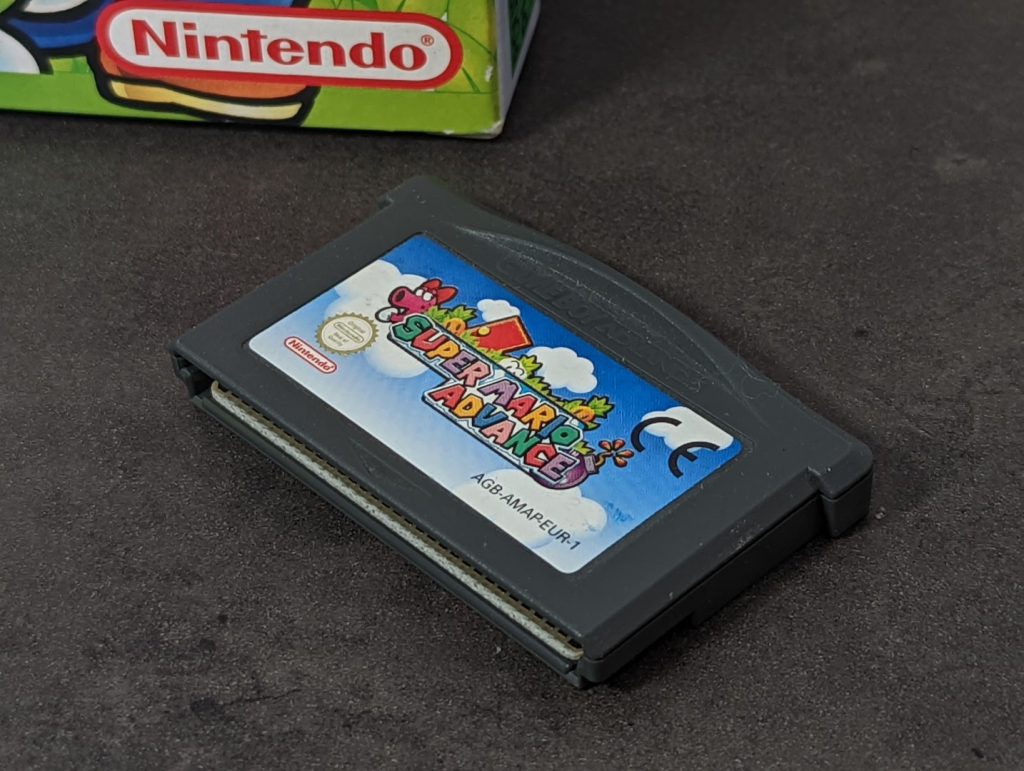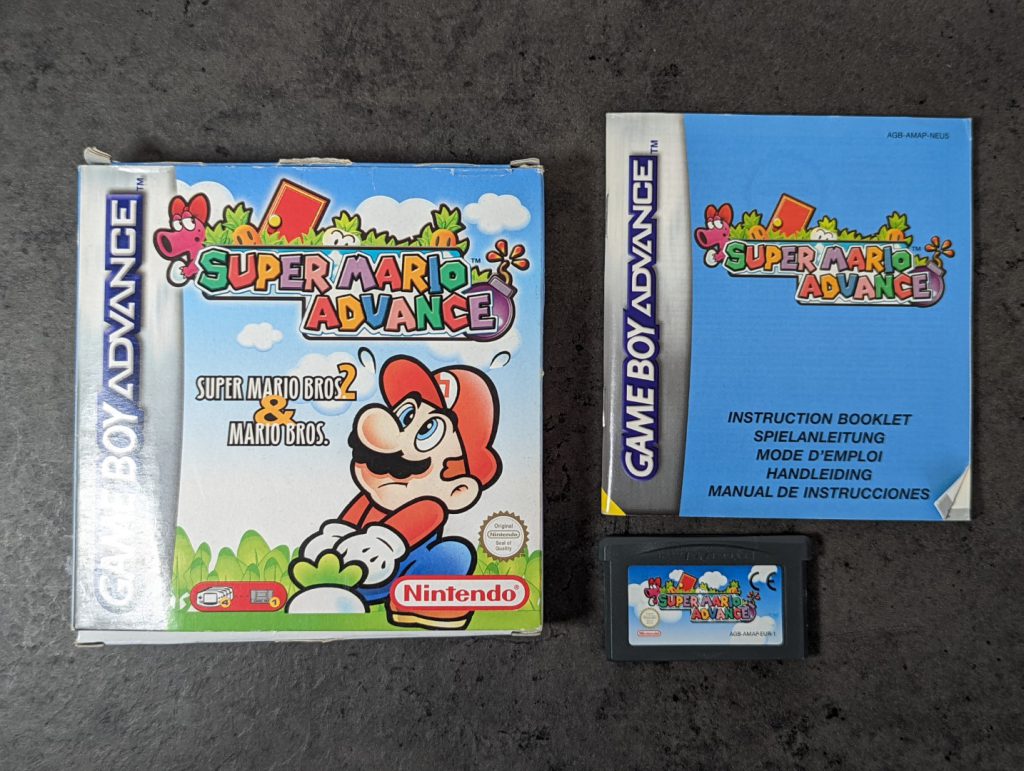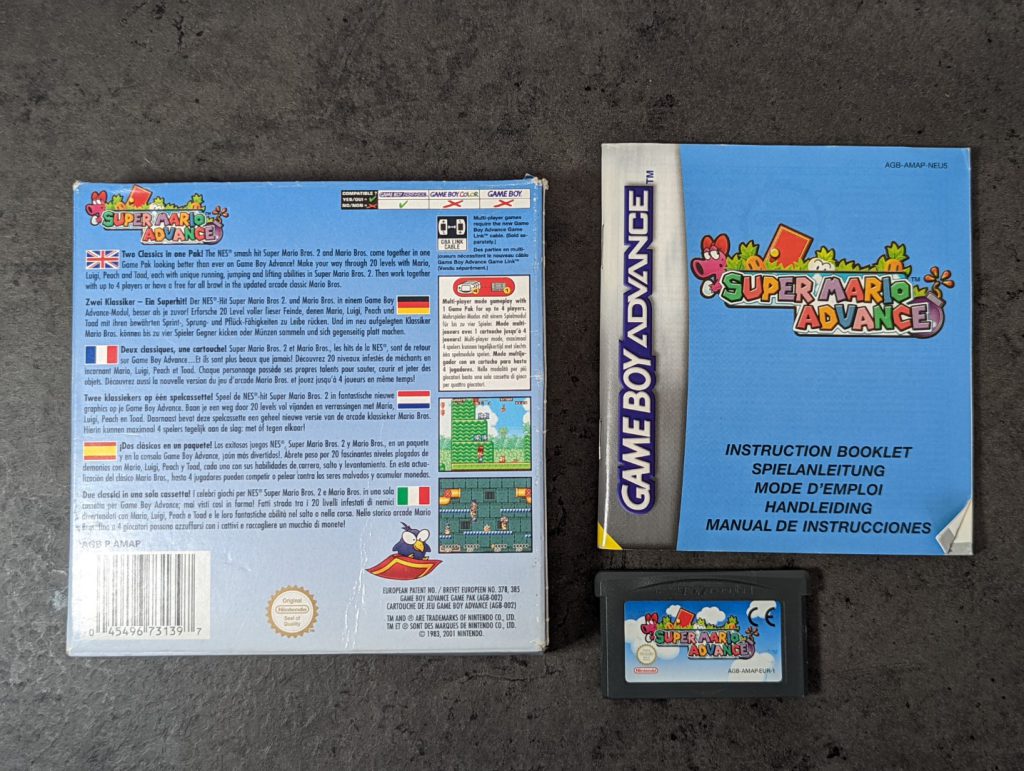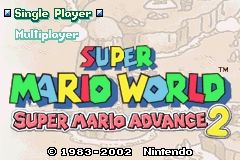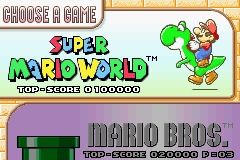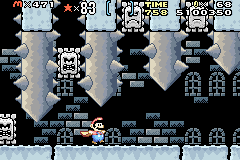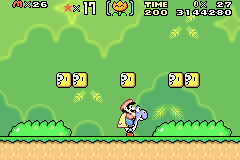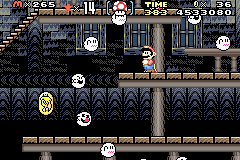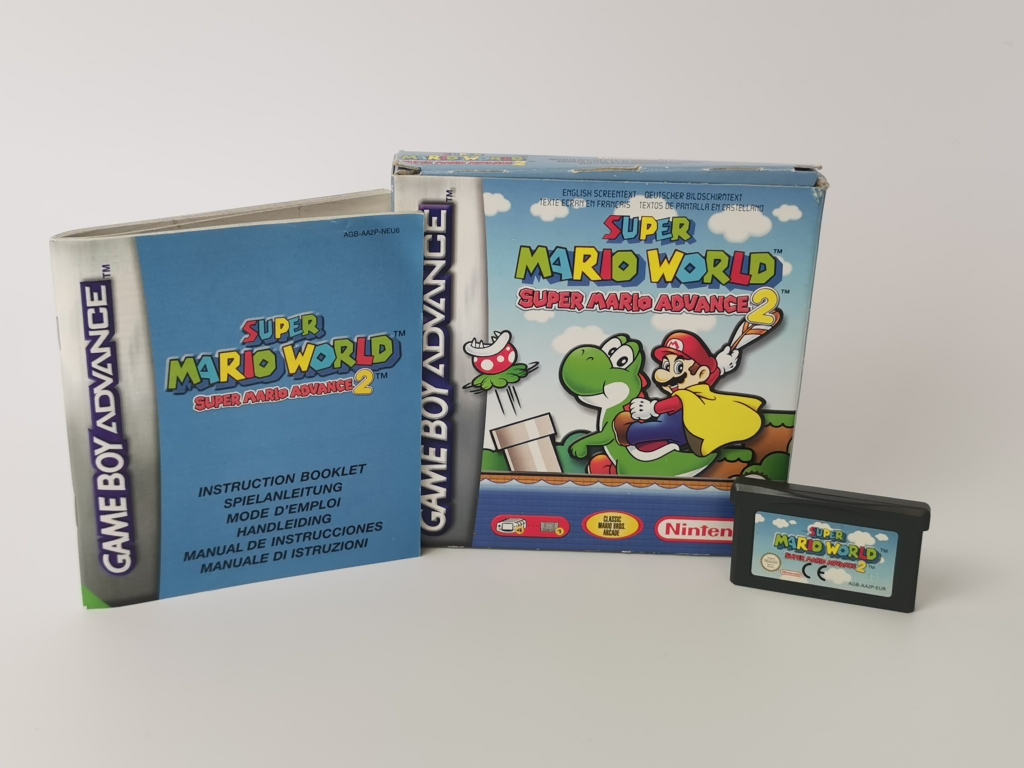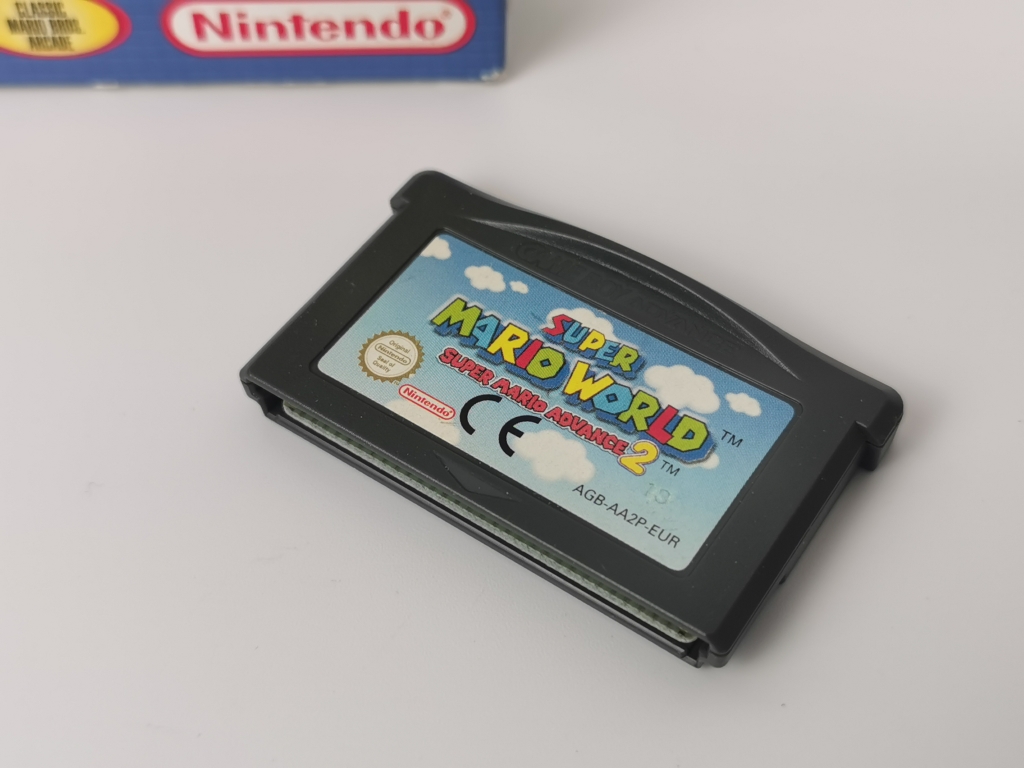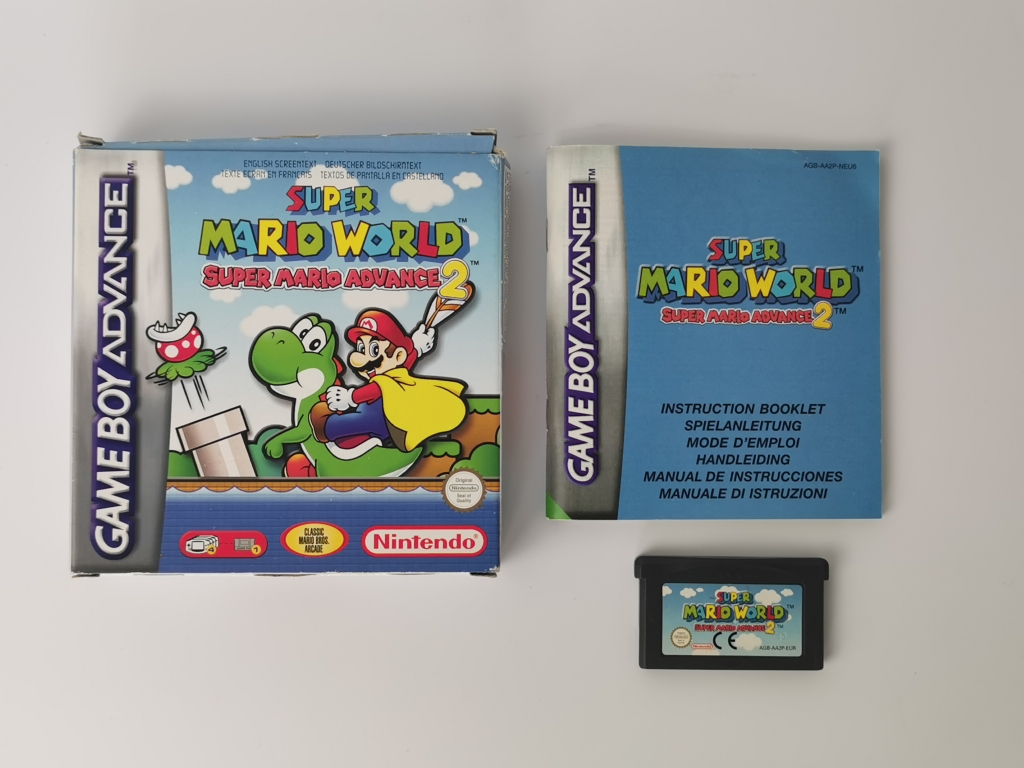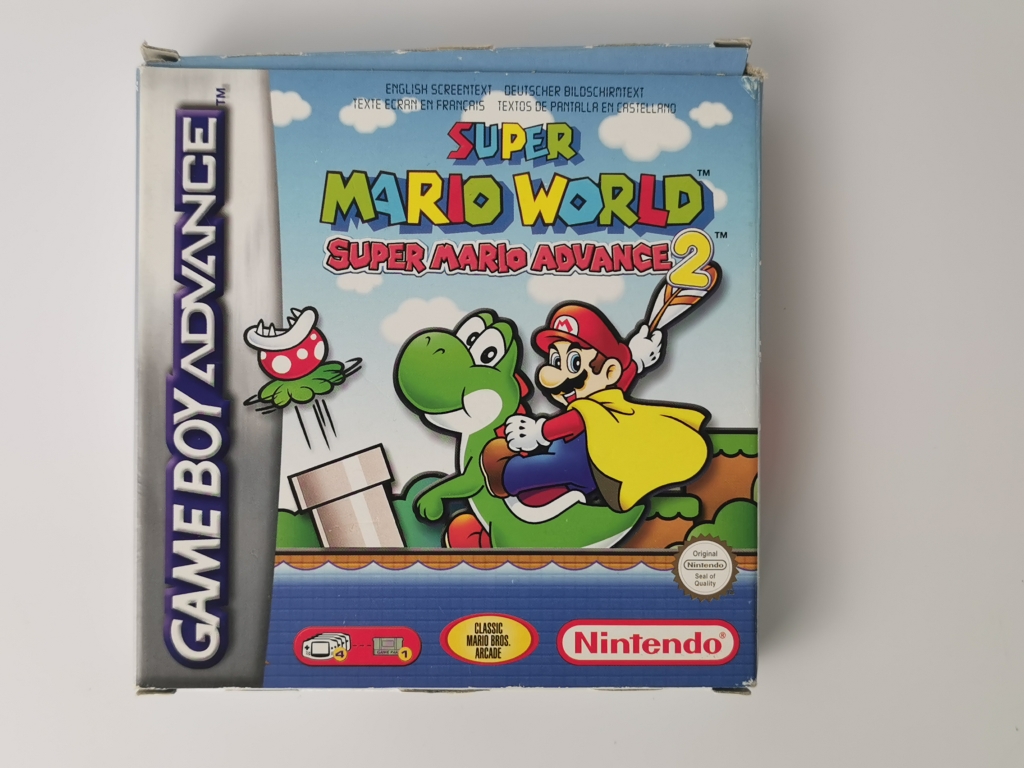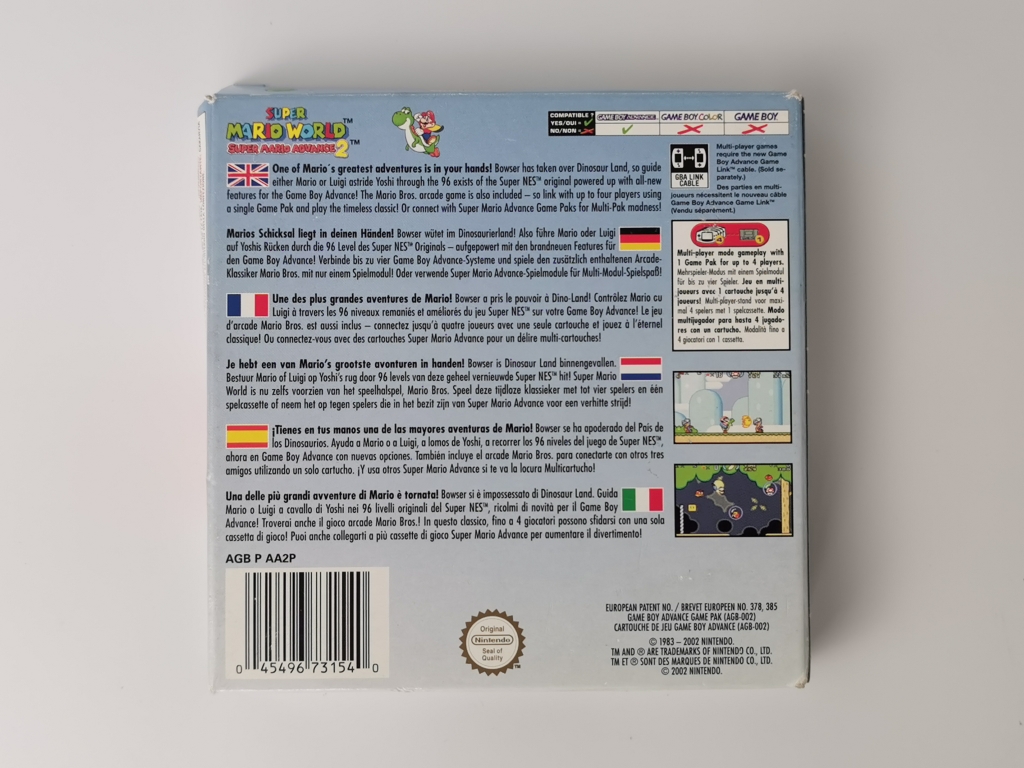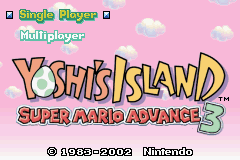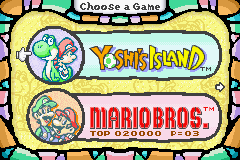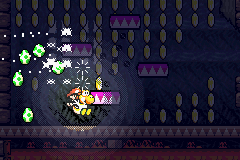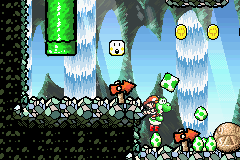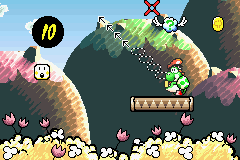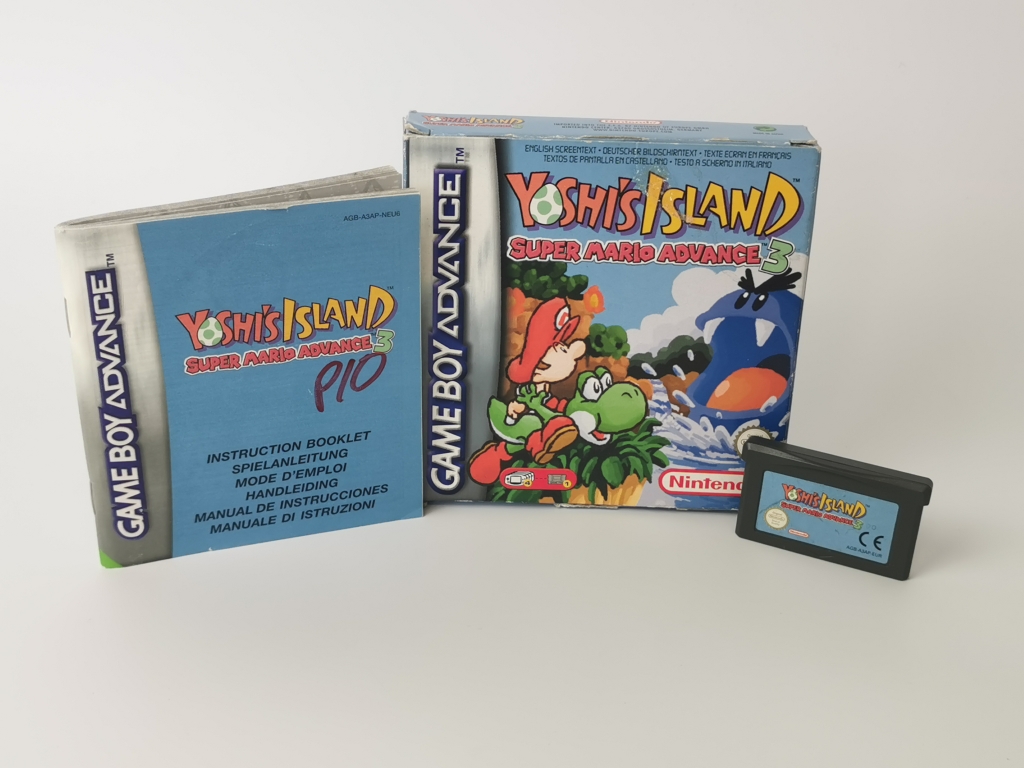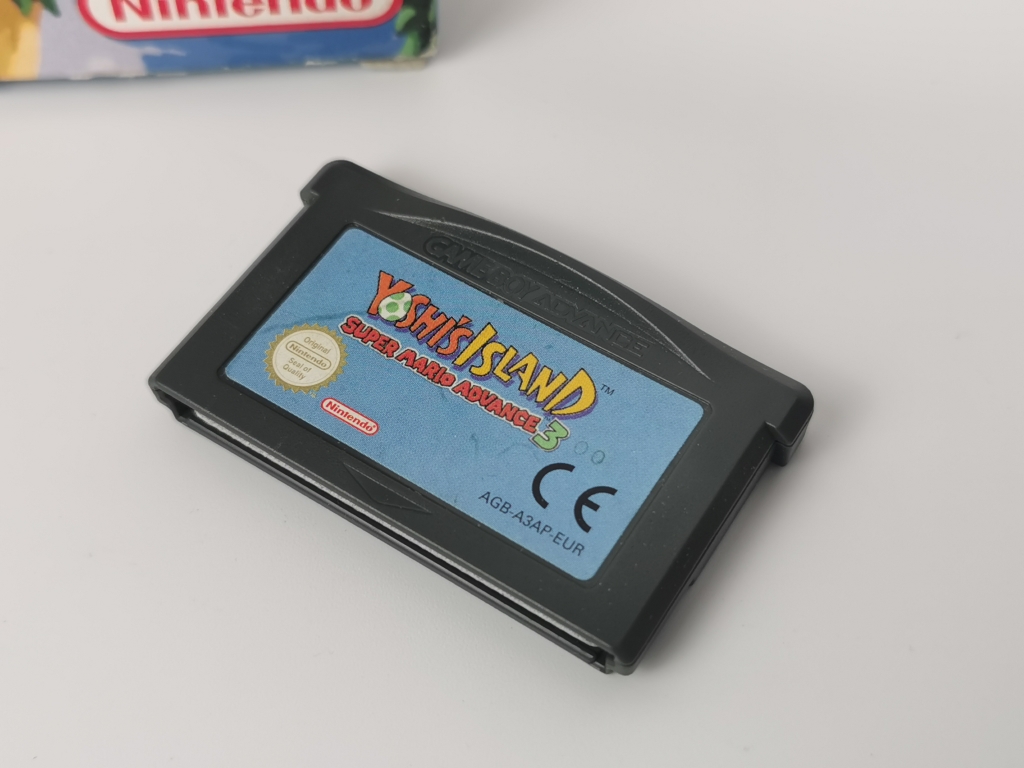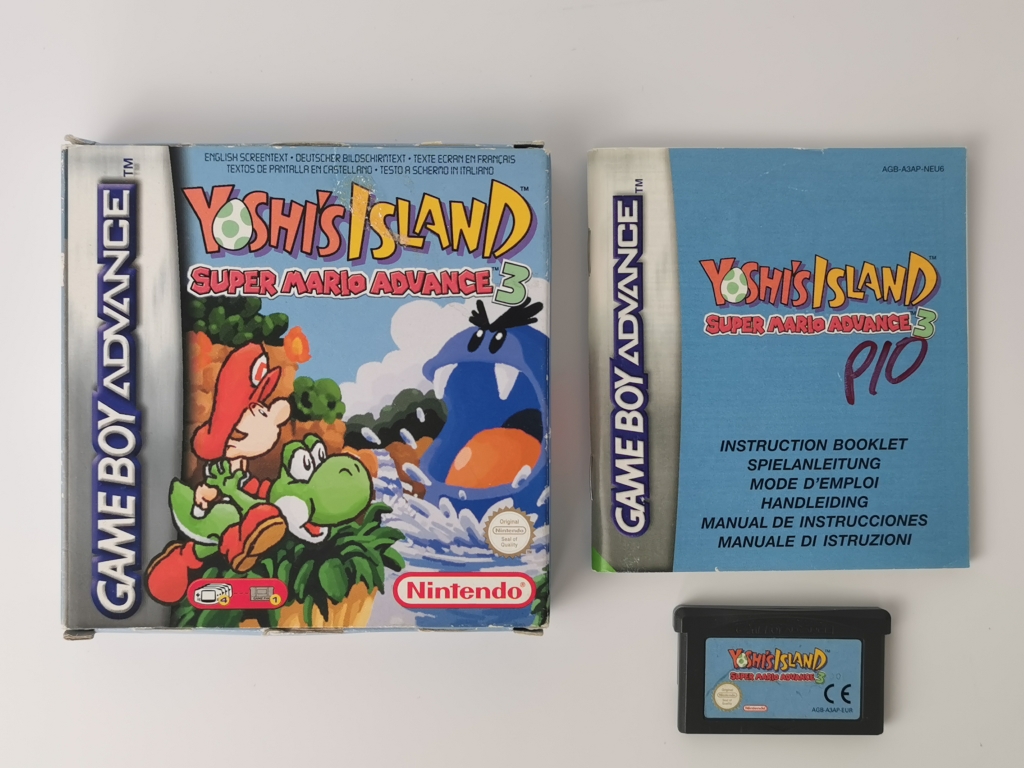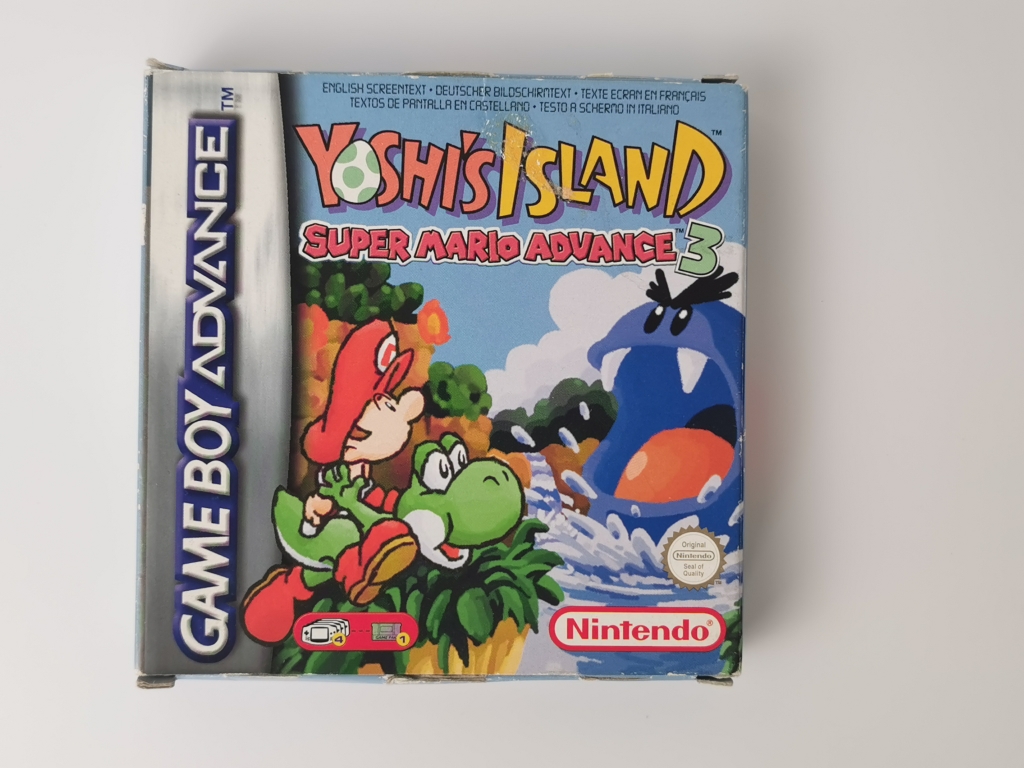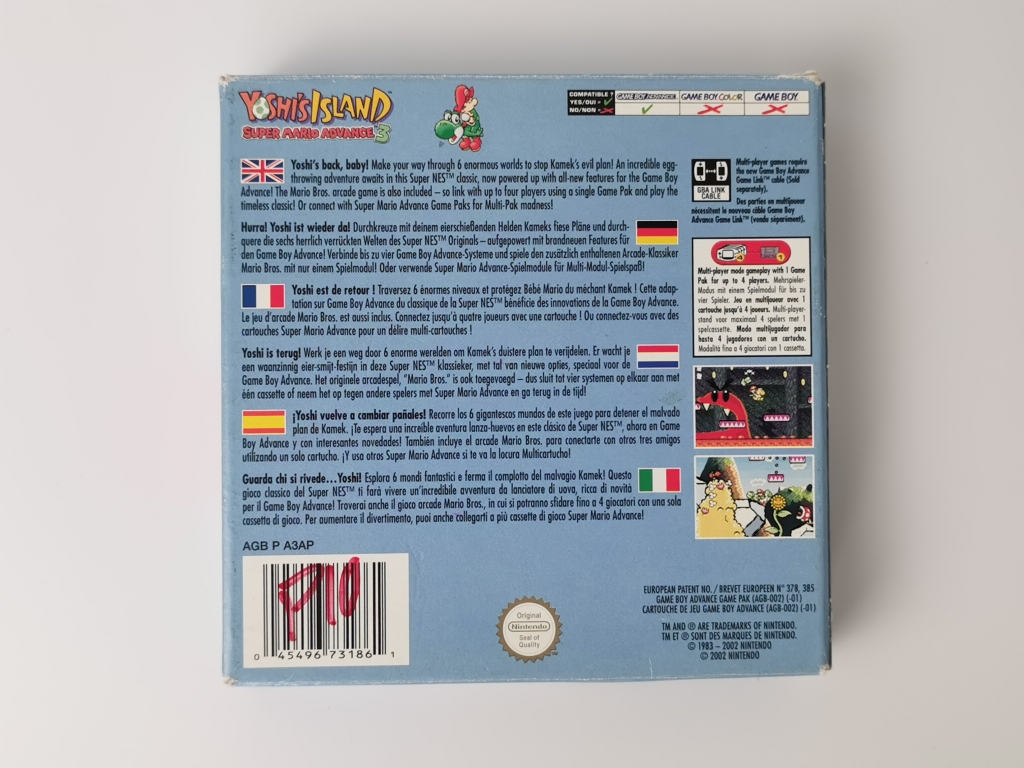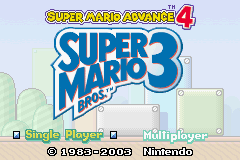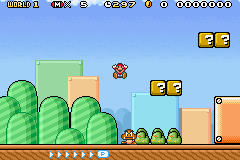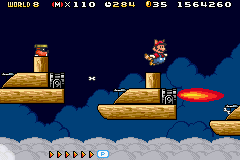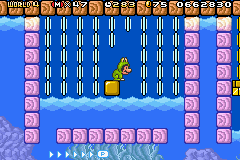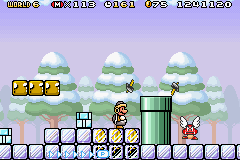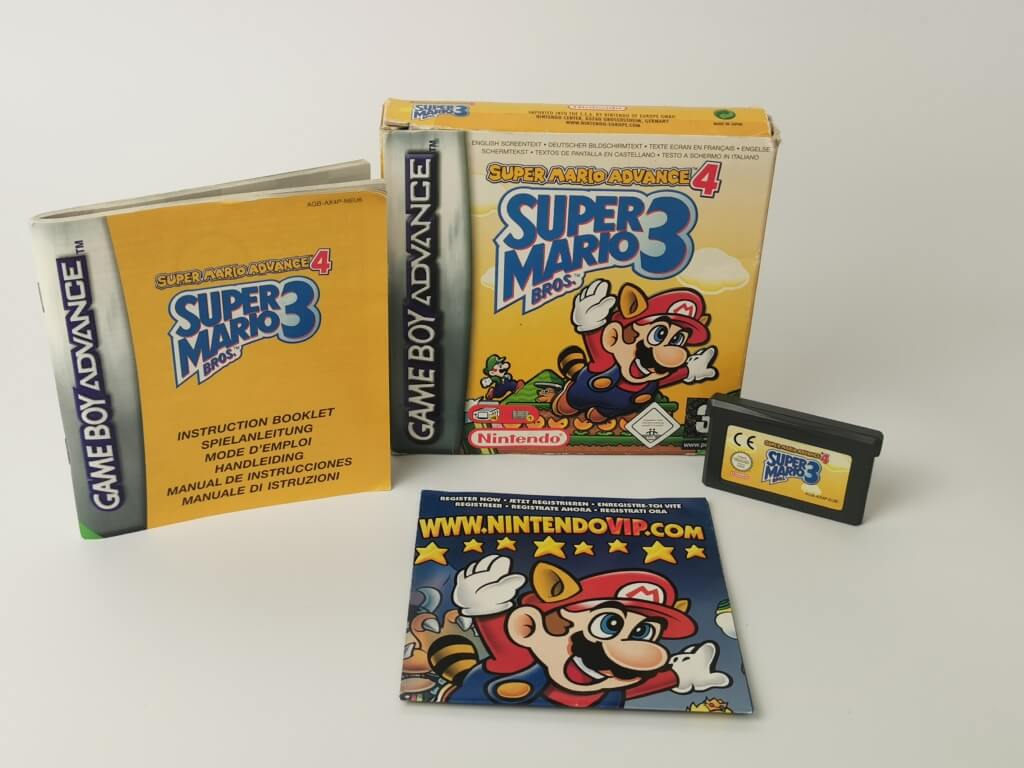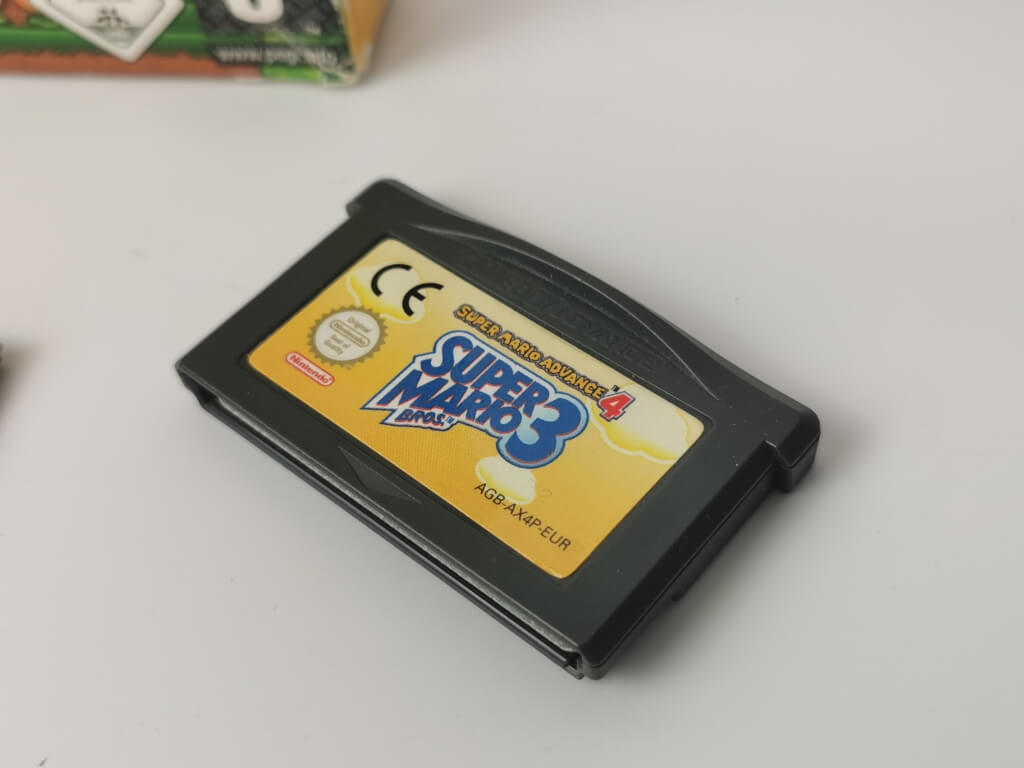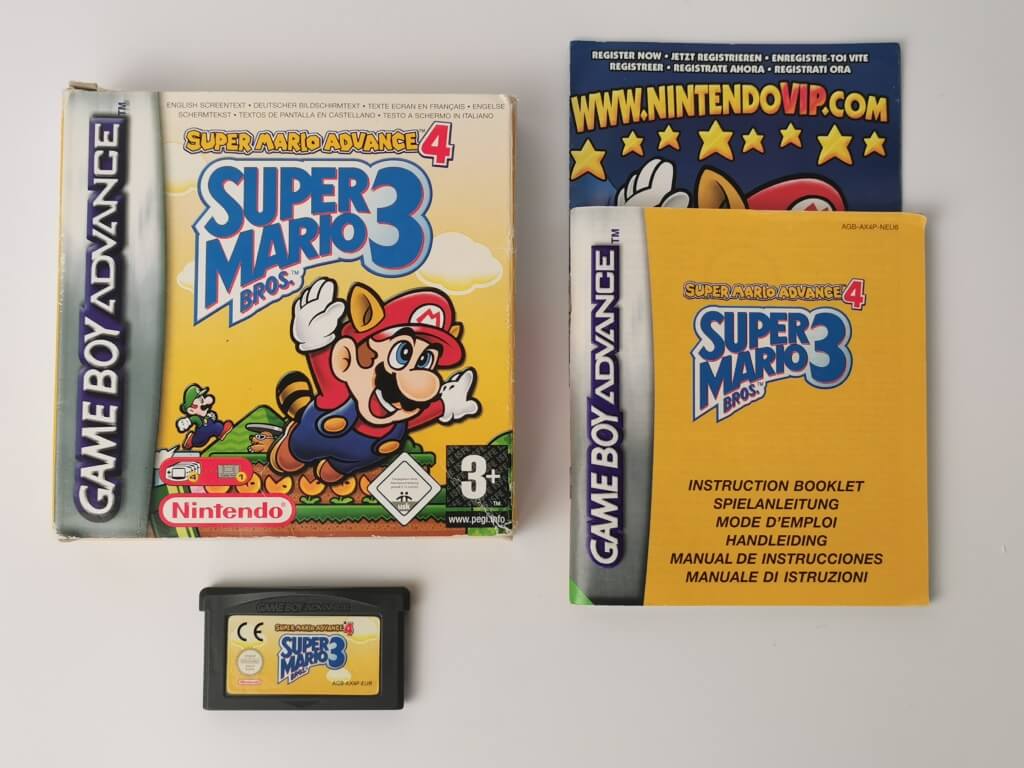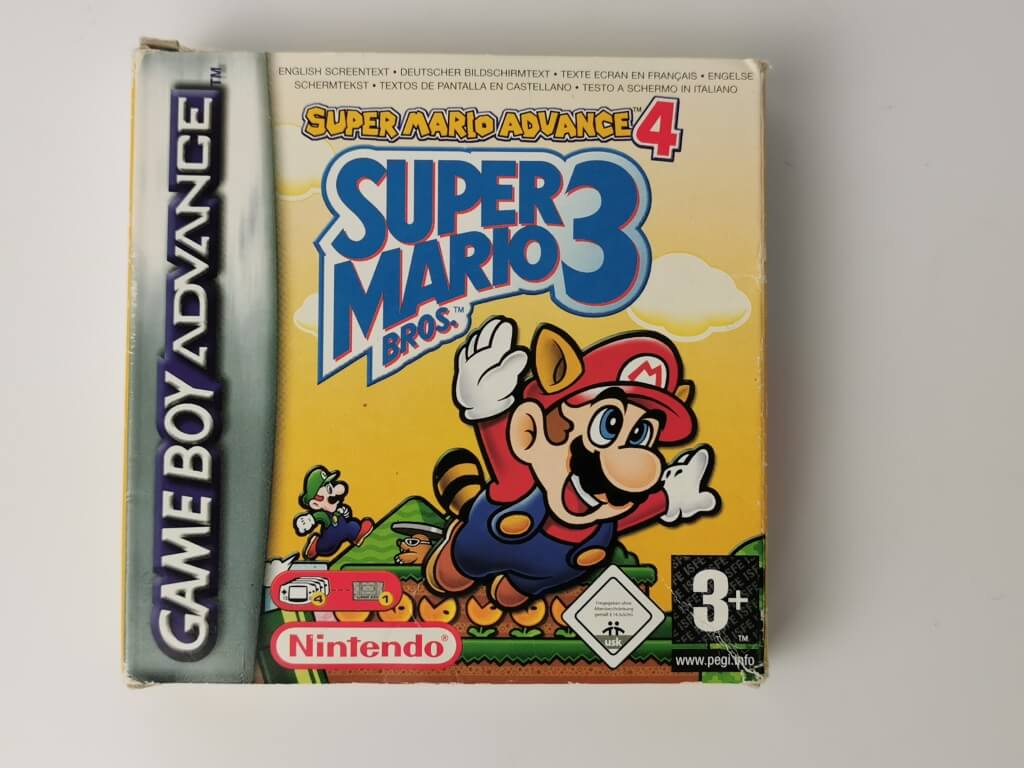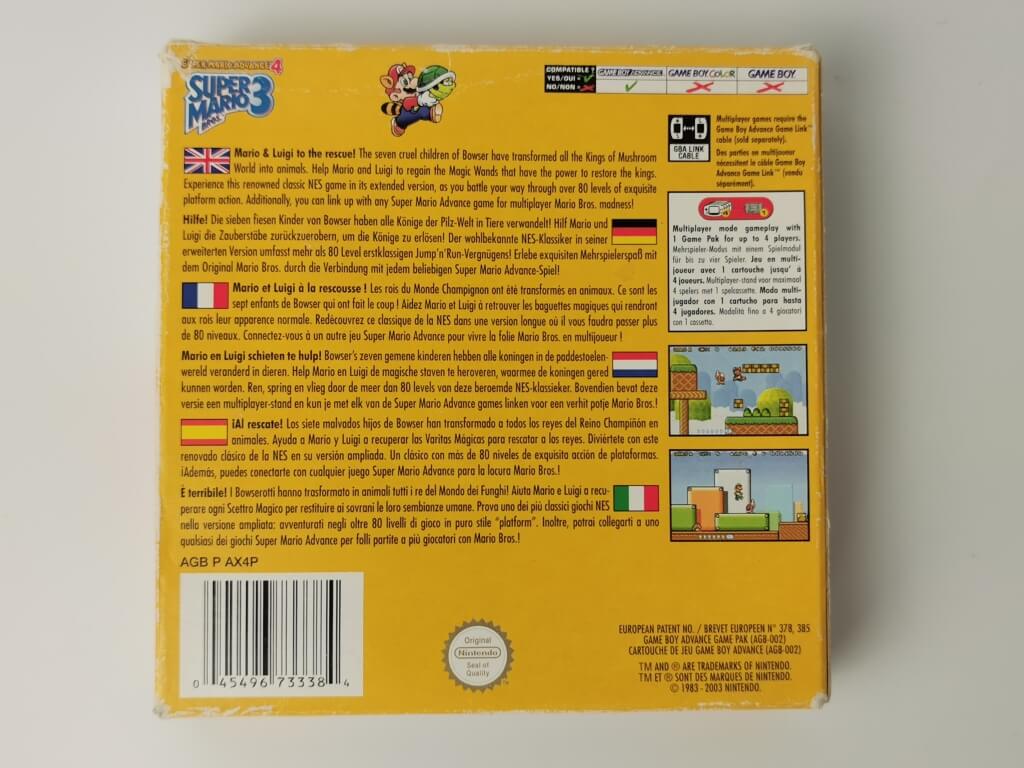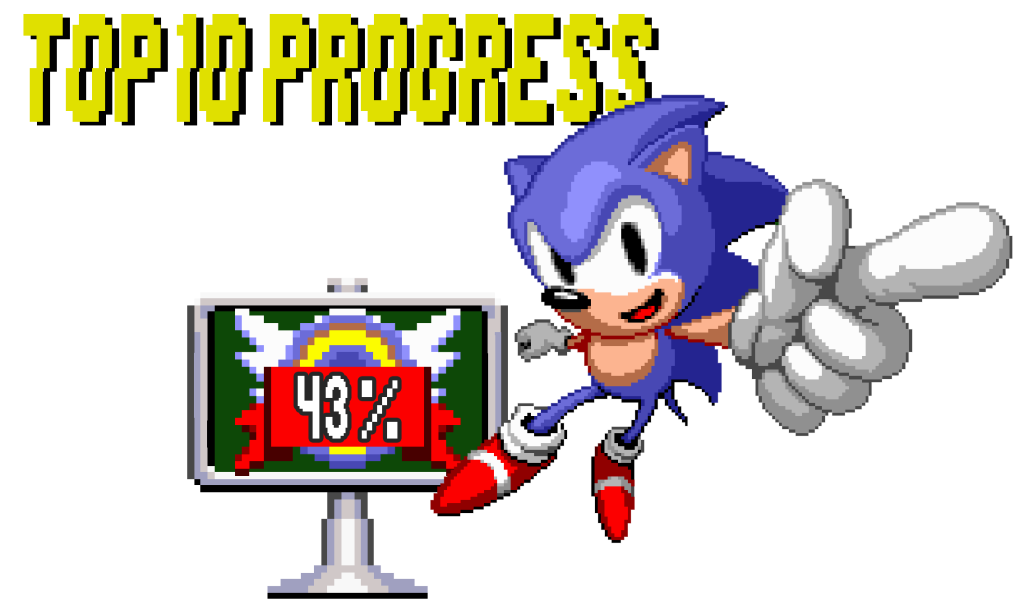I have been on this Top 10 Quest for a few years now, and this is only the third platform that I have managed to complete, it just shows how difficult this challenge is. But I digress.
I never had a GBA growing up, it just passed me right by. But looking at the top 10 best selling games on the system, you can really see the power Mario has for Nintendo, appearing in 6 of the 10 games on this list. The appearance of Mario games on various Nintendo systems is a common theme running through the top 10’s.
Namco Museum (2001)
With Namco Museum you can play arcade favorites on the new Game Boy Advance. Four Namco greats are included in this cartridge: classic maze game Ms. Pac-Man, dig-your-own-maze title Dig Dug, old-school racer Pole Position, and quintessential arcade shooter Galaga. Gamers old enough to remember when each of these titles used to require a full-size arcade cabinet will delight in the easy portability, instant access, and classic gameplay
Pac-Man Collection (2001)
Four classic Pac-Man games are included in this collection from Namco:
Pac-Man: The original arcade classic, complete and un-cut.
Pac-Mania: A conversion of the 1987 update to Pac-Man, which takes the elements of the original arcade game and puts it into an isometric view, as well as adding the ability to jump.
Pac-Man Arrangement: Never re-produced outside of the arcade, Arrangement again uses the elements of the original Pac-Man and adds a fifth ghost, who can change shape and size when combined with the other 4 ghosts, and make life harder for Pac-Man. New power-ups are also included, like the ability to dash quickly around the screen, warp points to get from one place to the other and new ways of catching ghosts.
Pac-Attack: Like Tetris before it, you must fit falling blocks together to complete a line to clear the screen. In this case, the falling tiles also have ghosts in them, and once the Pac-Man tile appears (a tile with the Pac-Man symbol), Pac-Man will eat all of the ghosts that are in his path until he gets to a dead end.
The Legend of Zelda: A Link to the Past/Four Swords (2002)
The Legend of Zelda: A Link to the Past/Four Swords features two games, a port of the SNES game The Legend of Zelda: A Link to the Past and a new multiplayer adventure called Four Swords.
A long time ago in Hyrule, there was a hero who used a legendary sword (which is called “Four Sword”) to defeat a sorcerer called Vaati and trapped him into the sword. After the battle, people built a shrine to protect the Four Sword.
Several years later, princess Zelda noticed that Vaati might have escaped from the blade of the Four Sword. She asked Link to come to the Four Sword shrine to check with her. As soon as they came there, Vaati captured Zelda and carried her away.
Some little fairies later told Link that princess Zelda was at Vaati’s palace up on the sky. In an attempt to recuse Zelda, Link dragged the Four Sword and it created three more Links! The Links then began their adventure to save Zelda…
Four Swords requires from two to four players. There are five levels (a training level, three main levels and Vaati palace-an unlockable level). During the game, players must collect as many Ruppees as possible while solving puzzles and defeating enemies. When enough Ruppees are collected, the Great Fairy will give the players a key to open the unlockable level. At the end of each level, the one who collects the most Ruppees will be the winner.
When any of the players dies, the number of Ruppees collected will decrease. The more times a Link dies, the more Ruppees are lost. The game is over when there are not enough Ruppees to revive any Link.
NES Classics Series: Super Mario Bros. (2004)
Classic NES Series: Super Mario Bros. is a Game Boy Advance video game released in 2004. It is a port of the Nintendo Entertainment System classic Super Mario Bros.
The Princess has been kidnapped by the evil Bowser, and it is up to Mario and brother Luigi to save the day.
The first-ever platform adventure for the Mario Brothers has the player exploring level after level, with Bowser to contend with as the end of level boss. Power-ups include the Super Mushroom, which increases Mario’s size and power, the fire flower, allowing him to shoot fireballs at enemies, and the ever-important starman for a short burst of invincibility.
Each level includes a bonus section filled with coins plus a shortcut through the level, plenty of bad buys and obstacles to get past, and an end-of-level flag, in which the higher the player grabs it, the more points are awarded to them. Certain levels also include warp points, which take the player to higher levels.
Wario Land 4 (2001)
In this fourth episode of the adventures of Mario’s nemesis, the greedy Wario reads in a newspaper about a secret treasure lost in a pyramid. That’s enough for Wario: he jumps in his car, enters the pyramid, and then you take control of him. Wario is a classic platform game with a twist: some enemies don’t actually hurt you but change you into various forms, like Floating Wario, Zombie Wario, or Bat Wario.
Mario Kart: Super Circuit (2001)
This GBA conversion brings together elements of both Super Mario Kart (the original SNES classic) and the N64 sequel, Mario Kart 64. Much like the SNES title, you can collect coins lying on the tracks to boost the speed of your kart. All of the characters from MK64 are included (Mario, Luigi, Toad, Donkey Kong, Bowser, Wario, Peach, and Yoshi) No Kart game is complete without a multiplayer mode. In this case, four can play classic and battle modes using either one cartridge and four GBA’s or four cartridges and four GBA’s for the full list of characters to choose from. Weapons include the classic green and red shells and the purple spiked shell. 20 new tracks, using elements from both past titles.
Super Mario Advance (2001)
This game consists of Super Mario Bros. 2 and Mario Bros. together in one Pak. There’s all the running, jumping, and veggie-flinging from the original Super Mario Bros. 2, plus new enemies and bigger items. Other changes include a scoring system, voice clips, and a new boss enemy, a robotic Birdo dubbed Robirdo, The game now includes a 100 red ace coins to collect throughout the game. There are 5 red coins per stage and when all 5 are collected the player will earn an extra life. After completing the game, players can try the Yoshi Challenge mode, where two Yoshi eggs are now hidden per stage throughout the game for a total of 40 hidden eggs. The challenges comes from the aspect that both eggs have to be collected per stage without losing a life.
Super Mario World: Super Mario Advance 2 (2001)
Mario and his brother Luigi are back for this second Super Mario Advance title: the first being a remake of Super Mario Bros. 2. The brothers, along with Princess Peach, are vacationing in Dinosaur Island. Then when they least expect it, Bowser once again kidnaps Peach and takes her to his castle. On the way to rescue her, the plumbers find Yoshi, who tells them that Bowser has also turned his friends into eggs. So the Mario brothers, with the help of Yoshi, must rescue the princess and Yoshi’s pals.
Mario and Luigi can run and jump through each level. They can also collect power-ups to gain new skills. The Super Mushroom makes them grow and gain more defense. The Fire Flower lets the brothers throw fireballs to defeat enemies. The Starman makes them invincible. The plumbers can gain the ability of flight with the Cape Feather.
Yoshi can help Mario and Luigi if they find an egg. The green dinosaur can use his tongue to eat enemies or grab power-ups. He can walk across certain enemies with his shoes. Yoshi can eat differently colored Koopa shells to briefly gain more abilities. For instance, the blue shell gives him wings, red shells let him spit fireballs, and the yellow shell allows him to stomp the ground.
This update over the original Super Nintendo version adds characters’ speech (as heard in Super Mario games since Super Mario 64). Up to four players can compete in a modernised version of the classic Mario Bros. game, included as an extra to the main game.
Yoshi’s Island: Super Mario Advance 3 (2002)
Yoshi’s Island: Super Mario Advance 3 is a conversion of Super Mario World 2: Yoshi’s Island, which stars the dinosaur Yoshi as the main character. It includes six secret levels not found in its SNES counterpart. Following the same style in general as other Mario games, this is a platform game which involves you trying to get to the end of the levels while keeping Baby Mario safe from enemies.
This game contains Mario Bros., which is also available on Super Mario Advance and Super Mario World: Super Mario Advance 2.
Super Mario Advance 4: Super Mario Bros. 3 (2003)
Super Mario Advance 4: Super Mario Bros. 3 is an enhanced re-release of Super Mario Bros. 3.The two most obvious changes are the updated graphics (based on the version in Super Mario All-Stars) and the replacement of Mario Bros. with the remake version included in all Mario Advance titles.
Additionally there are a big number of smaller changes, e.g. an additional starting cutscene, various gameplay changes, some redesigned levels to fit the smaller screen or added voice acting.

